(NRAS_Hotspot_Mutants cohort)
This report serves to describe the mutational landscape and properties of a given individual set, as well as rank genes and genesets according to mutational significance. MutSig v1.5 was used to generate the results found in this report.
-
Working with individual set: SKCM-NRAS_Hotspot_Mutants
-
Number of patients in set: 62
The input for this pipeline is a set of individuals with the following files associated for each:
-
An annotated .maf file describing the mutations called for the respective individual, and their properties.
-
A .wig file that contains information about the coverage of the sample.
-
MAF used for this analysis:SKCM-NRAS_Hotspot_Mutants.final_analysis_set.maf
-
Significantly mutated genes (q ≤ 0.1): 128
-
Mutations seen in COSMIC: 190
-
Significantly mutated genes in COSMIC territory: 10
-
Genes with clustered mutations (≤ 3 aa apart): 221
-
Significantly mutated genesets: 2
-
Significantly mutated genesets: (excluding sig. mutated genes):0
-
Read 62 MAFs of type "Broad"
-
Total number of mutations in input MAFs: 46988
-
After removing 261 blacklisted mutations: 46727
-
After removing 895 noncoding mutations: 45832
-
Number of mutations before filtering: 45832
-
After removing 572 mutations outside gene set: 45260
-
After removing 13 mutations outside category set: 45247
-
After removing 3 "impossible" mutations in
-
gene-patient-category bins of zero coverage: 44659
Table 1. Get Full Table Table representing breakdown of mutations by type.
| type | count |
|---|---|
| Frame_Shift_Del | 328 |
| Frame_Shift_Ins | 88 |
| In_Frame_Del | 158 |
| In_Frame_Ins | 17 |
| Missense_Mutation | 27459 |
| Nonsense_Mutation | 1812 |
| Nonstop_Mutation | 8 |
| Silent | 14879 |
| Splice_Site | 485 |
| Translation_Start_Site | 13 |
| Total | 45247 |
Table 2. Get Full Table A breakdown of mutation rates per category discovered for this individual set.
| category | n | N | rate | rate_per_mb | relative_rate | exp_ns_s_ratio |
|---|---|---|---|---|---|---|
| (C/T)p*C->T | 20356 | 494333534 | 0.000041 | 41 | 2.4 | 1.6 |
| (A/G)p*C->T | 2339 | 414978099 | 5.6e-06 | 5.6 | 0.33 | 1.9 |
| A->G | 1355 | 877421330 | 1.5e-06 | 1.5 | 0.091 | 2.3 |
| transver | 3420 | 1786732963 | 1.9e-06 | 1.9 | 0.11 | 5 |
| indel+null | 2884 | 1786732963 | 1.6e-06 | 1.6 | 0.095 | NaN |
| double_null | 13 | 1786732963 | 7.3e-09 | 0.0073 | 0.00043 | NaN |
| Total | 30367 | 1786732963 | 0.000017 | 17 | 1 | 3.5 |
The x axis represents the samples. The y axis represents the exons, one row per exon, and they are sorted by average coverage across samples. For exons with exactly the same average coverage, they are sorted next by the %GC of the exon. (The secondary sort is especially useful for the zero-coverage exons at the bottom).
Figure 1.
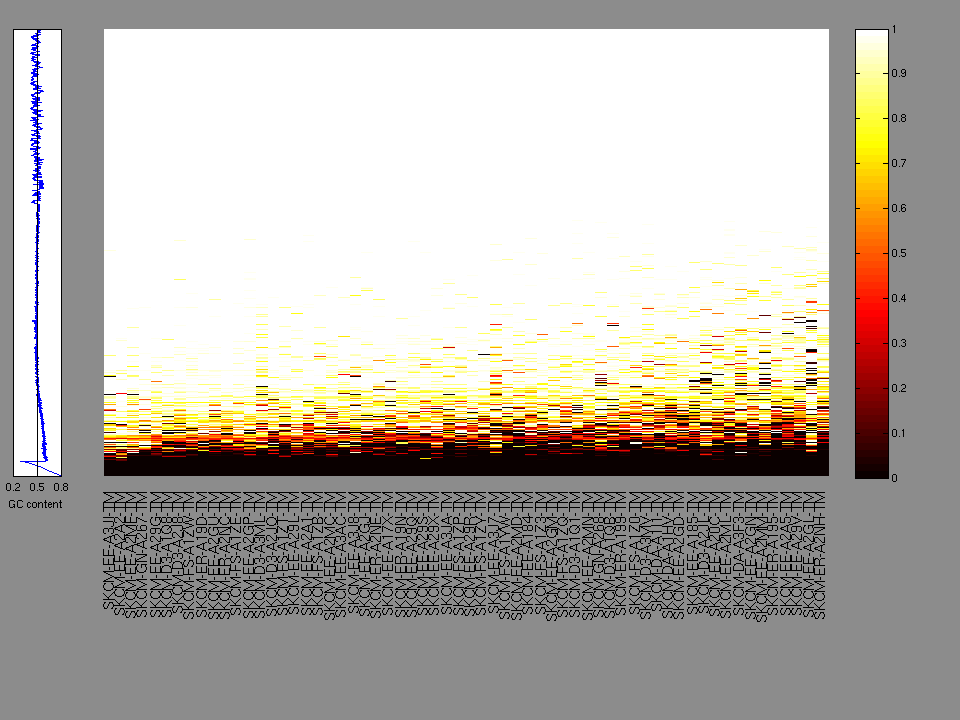
Figure 2. Patients counts and rates file used to generate this plot: SKCM-NRAS_Hotspot_Mutants.patients.counts_and_rates.txt
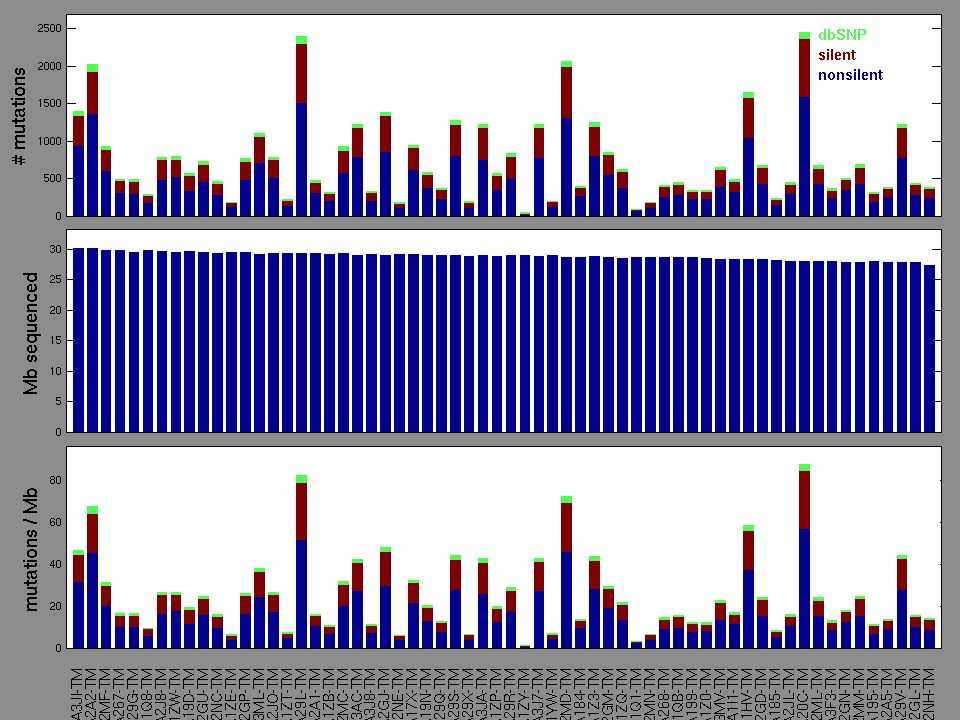
Figure 3. Get High-res Image The matrix in the center of the figure represents individual mutations in patient samples, color-coded by type of mutation, for the significantly mutated genes. The rate of synonymous and non-synonymous mutations is displayed at the top of the matrix. The barplot on the left of the matrix shows the number of mutations in each gene. The percentages represent the fraction of tumors with at least one mutation in the specified gene. The barplot to the right of the matrix displays the q-values for the most significantly mutated genes. The purple boxplots below the matrix (only displayed if required columns are present in the provided MAF) represent the distributions of allelic fractions observed in each sample. The plot at the bottom represents the base substitution distribution of individual samples, using the same categories that were used to calculate significance.
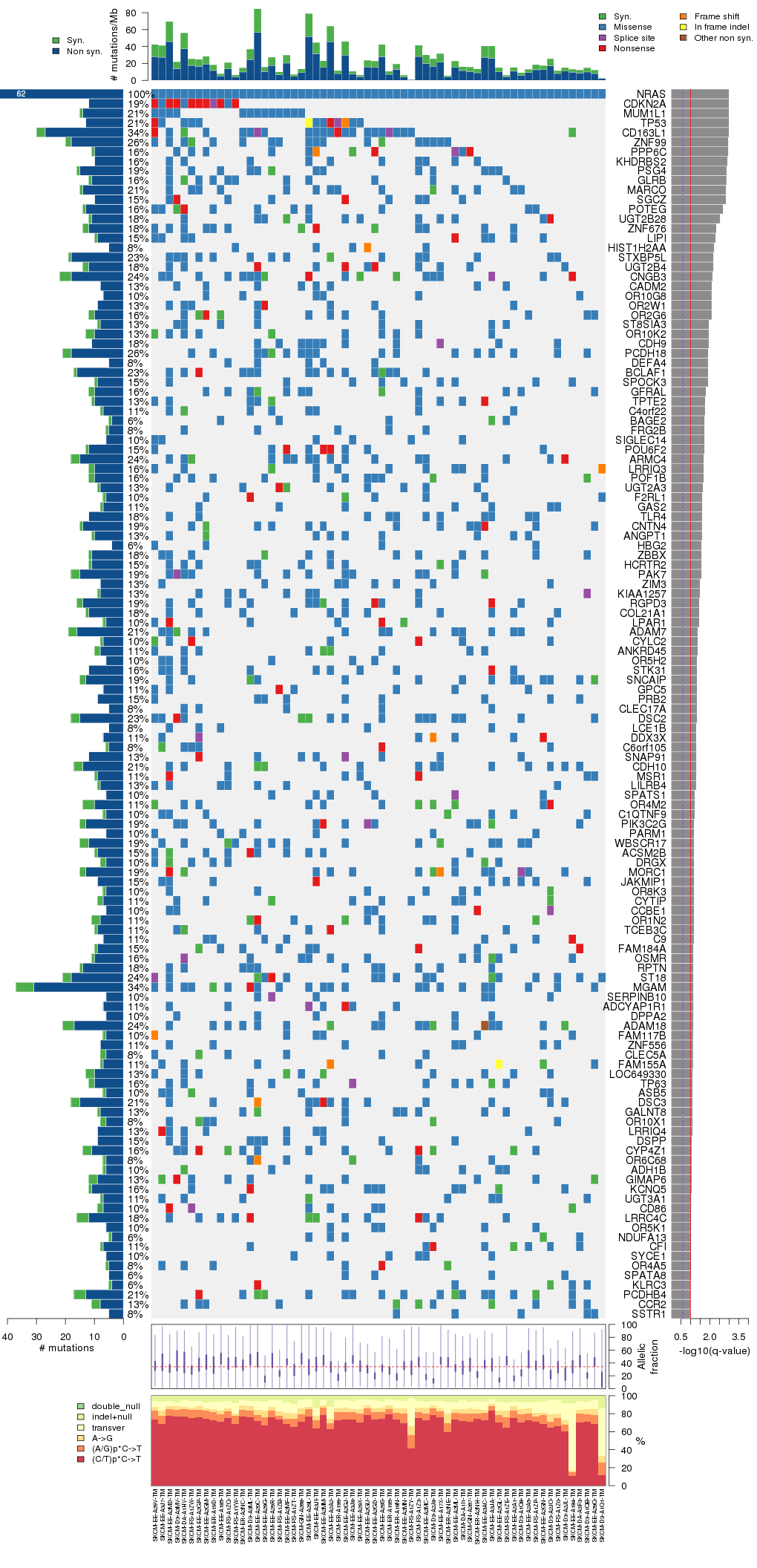
Column Descriptions:
-
N = number of sequenced bases in this gene across the individual set
-
n = number of (nonsilent) mutations in this gene across the individual set
-
npat = number of patients (individuals) with at least one nonsilent mutation
-
nsite = number of unique sites having a non-silent mutation
-
nsil = number of silent mutations in this gene across the individual set
-
n1 = number of nonsilent mutations of type: (C/T)p*C->T
-
n2 = number of nonsilent mutations of type: (A/G)p*C->T
-
n3 = number of nonsilent mutations of type: A->G
-
n4 = number of nonsilent mutations of type: transver
-
n5 = number of nonsilent mutations of type: indel+null
-
n6 = number of nonsilent mutations of type: double_null
-
p_ns_s = p-value for the observed nonsilent/silent ratio being elevated in this gene
-
p = p-value (overall)
-
q = q-value, False Discovery Rate (Benjamini-Hochberg procedure)
Table 3. Get Full Table A Ranked List of Significantly Mutated Genes. Number of significant genes found: 128. Number of genes displayed: 35. Click on a gene name to display its stick figure depicting the distribution of mutations and mutation types across the chosen gene (this feature may not be available for all significant genes).
| rank | gene | description | N | n | npat | nsite | nsil | n1 | n2 | n3 | n4 | n5 | n6 | p_ns_s | p | q |
|---|---|---|---|---|---|---|---|---|---|---|---|---|---|---|---|---|
| 1 | NRAS | neuroblastoma RAS viral (v-ras) oncogene homolog | 36331 | 62 | 62 | 6 | 0 | 0 | 1 | 22 | 39 | 0 | 0 | 2.2e-07 | 1.2e-15 | 2.2e-11 |
| 2 | CDKN2A | cyclin-dependent kinase inhibitor 2A (melanoma, p16, inhibits CDK4) | 55401 | 12 | 12 | 8 | 0 | 3 | 0 | 0 | 0 | 9 | 0 | 0.018 | 3.2e-12 | 2.9e-08 |
| 3 | MUM1L1 | melanoma associated antigen (mutated) 1-like 1 | 77235 | 14 | 13 | 14 | 1 | 9 | 1 | 1 | 3 | 0 | 0 | 0.052 | 6.5e-12 | 3.9e-08 |
| 4 | TP53 | tumor protein p53 | 74456 | 13 | 13 | 12 | 0 | 6 | 0 | 1 | 1 | 5 | 0 | 0.014 | 4.8e-11 | 2.2e-07 |
| 5 | CD163L1 | CD163 molecule-like 1 | 272450 | 27 | 21 | 25 | 3 | 18 | 3 | 0 | 2 | 4 | 0 | 0.02 | 6.7e-10 | 2.4e-06 |
| 6 | ZNF99 | zinc finger protein 99 | 188343 | 18 | 16 | 16 | 2 | 13 | 3 | 0 | 2 | 0 | 0 | 0.063 | 3e-08 | 0.000084 |
| 7 | PPP6C | protein phosphatase 6, catalytic subunit | 62508 | 10 | 10 | 9 | 1 | 6 | 0 | 0 | 0 | 4 | 0 | 0.18 | 3.2e-08 | 0.000084 |
| 8 | KHDRBS2 | KH domain containing, RNA binding, signal transduction associated 2 | 62617 | 10 | 10 | 9 | 0 | 5 | 3 | 0 | 2 | 0 | 0 | 0.065 | 6.9e-08 | 0.00016 |
| 9 | PSG4 | pregnancy specific beta-1-glycoprotein 4 | 79523 | 15 | 12 | 12 | 1 | 13 | 0 | 0 | 2 | 0 | 0 | 0.0074 | 1.6e-07 | 0.00032 |
| 10 | GLRB | glycine receptor, beta | 90035 | 11 | 10 | 10 | 1 | 7 | 1 | 1 | 2 | 0 | 0 | 0.058 | 1.8e-07 | 0.00033 |
| 11 | MARCO | macrophage receptor with collagenous structure | 90932 | 14 | 13 | 14 | 1 | 13 | 0 | 0 | 1 | 0 | 0 | 0.032 | 2.2e-07 | 0.00037 |
| 12 | SGCZ | sarcoglycan zeta | 55301 | 10 | 9 | 9 | 0 | 7 | 0 | 0 | 1 | 2 | 0 | 0.016 | 2.9e-07 | 0.00043 |
| 13 | POTEG | POTE ankyrin domain family, member G | 69185 | 13 | 10 | 9 | 1 | 11 | 1 | 0 | 0 | 1 | 0 | 0.062 | 6.9e-07 | 0.00096 |
| 14 | UGT2B28 | UDP glucuronosyltransferase 2 family, polypeptide B28 | 91580 | 11 | 11 | 11 | 1 | 10 | 0 | 0 | 0 | 1 | 0 | 0.07 | 1.4e-06 | 0.0018 |
| 15 | ZNF676 | zinc finger protein 676 | 108628 | 12 | 11 | 12 | 2 | 10 | 0 | 0 | 1 | 0 | 1 | 0.15 | 2.7e-06 | 0.0033 |
| 16 | LIPI | lipase, member I | 90445 | 9 | 9 | 9 | 1 | 6 | 0 | 2 | 0 | 1 | 0 | 0.17 | 3.4e-06 | 0.0038 |
| 17 | HIST1H2AA | histone cluster 1, H2aa | 24800 | 5 | 5 | 5 | 0 | 2 | 1 | 0 | 1 | 1 | 0 | 0.21 | 4.4e-06 | 0.0047 |
| 18 | STXBP5L | syntaxin binding protein 5-like | 216617 | 18 | 14 | 17 | 1 | 14 | 1 | 1 | 2 | 0 | 0 | 0.029 | 5.4e-06 | 0.0054 |
| 19 | UGT2B4 | UDP glucuronosyltransferase 2 family, polypeptide B4 | 95458 | 12 | 11 | 12 | 2 | 9 | 0 | 0 | 0 | 2 | 1 | 0.14 | 5.6e-06 | 0.0054 |
| 20 | CNGB3 | cyclic nucleotide gated channel beta 3 | 152769 | 18 | 15 | 15 | 4 | 12 | 2 | 1 | 0 | 3 | 0 | 0.18 | 6.7e-06 | 0.0061 |
| 21 | CADM2 | cell adhesion molecule 2 | 80135 | 8 | 8 | 8 | 0 | 5 | 3 | 0 | 0 | 0 | 0 | 0.058 | 7.8e-06 | 0.0067 |
| 22 | OR10G8 | olfactory receptor, family 10, subfamily G, member 8 | 57826 | 7 | 6 | 7 | 0 | 1 | 1 | 2 | 3 | 0 | 0 | 0.092 | 8.5e-06 | 0.0068 |
| 23 | OR2W1 | olfactory receptor, family 2, subfamily W, member 1 | 59039 | 9 | 8 | 9 | 0 | 7 | 0 | 0 | 1 | 1 | 0 | 0.0092 | 9e-06 | 0.0068 |
| 24 | OR2G6 | olfactory receptor, family 2, subfamily G, member 6 | 59195 | 10 | 10 | 10 | 2 | 9 | 0 | 0 | 0 | 1 | 0 | 0.019 | 9.1e-06 | 0.0068 |
| 25 | ST8SIA3 | ST8 alpha-N-acetyl-neuraminide alpha-2,8-sialyltransferase 3 | 71096 | 8 | 8 | 8 | 1 | 6 | 0 | 1 | 1 | 0 | 0 | 0.12 | 0.000013 | 0.0093 |
| 26 | OR10K2 | olfactory receptor, family 10, subfamily K, member 2 | 54516 | 10 | 8 | 10 | 3 | 7 | 0 | 0 | 3 | 0 | 0 | 0.12 | 0.000013 | 0.0093 |
| 27 | CDH9 | cadherin 9, type 2 (T1-cadherin) | 145105 | 11 | 11 | 10 | 0 | 8 | 0 | 0 | 2 | 1 | 0 | 0.034 | 0.000014 | 0.0097 |
| 28 | PCDH18 | protocadherin 18 | 209409 | 18 | 16 | 15 | 3 | 14 | 1 | 1 | 2 | 0 | 0 | 0.066 | 0.000017 | 0.011 |
| 29 | DEFA4 | defensin, alpha 4, corticostatin | 17991 | 5 | 5 | 5 | 0 | 4 | 0 | 0 | 1 | 0 | 0 | 0.18 | 0.000017 | 0.011 |
| 30 | BCLAF1 | BCL2-associated transcription factor 1 | 169235 | 16 | 14 | 14 | 1 | 14 | 0 | 1 | 0 | 1 | 0 | 0.081 | 0.000018 | 0.011 |
| 31 | SPOCK3 | sparc/osteonectin, cwcv and kazal-like domains proteoglycan (testican) 3 | 80077 | 9 | 9 | 8 | 1 | 8 | 0 | 0 | 1 | 0 | 0 | 0.2 | 0.000018 | 0.011 |
| 32 | GFRAL | GDNF family receptor alpha like | 74495 | 10 | 10 | 10 | 2 | 10 | 0 | 0 | 0 | 0 | 0 | 0.19 | 0.000025 | 0.014 |
| 33 | TPTE2 | transmembrane phosphoinositide 3-phosphatase and tensin homolog 2 | 100496 | 10 | 8 | 10 | 1 | 5 | 2 | 1 | 1 | 1 | 0 | 0.15 | 0.000028 | 0.015 |
| 34 | C4orf22 | chromosome 4 open reading frame 22 | 44053 | 7 | 7 | 5 | 1 | 6 | 1 | 0 | 0 | 0 | 0 | 0.19 | 0.000031 | 0.016 |
| 35 | BAGE2 | B melanoma antigen family, member 2 | 21449 | 4 | 4 | 4 | 1 | 3 | 0 | 0 | 1 | 0 | 0 | 0.3 | 0.000034 | 0.017 |
Figure S1. This figure depicts the distribution of mutations and mutation types across the NRAS significant gene.
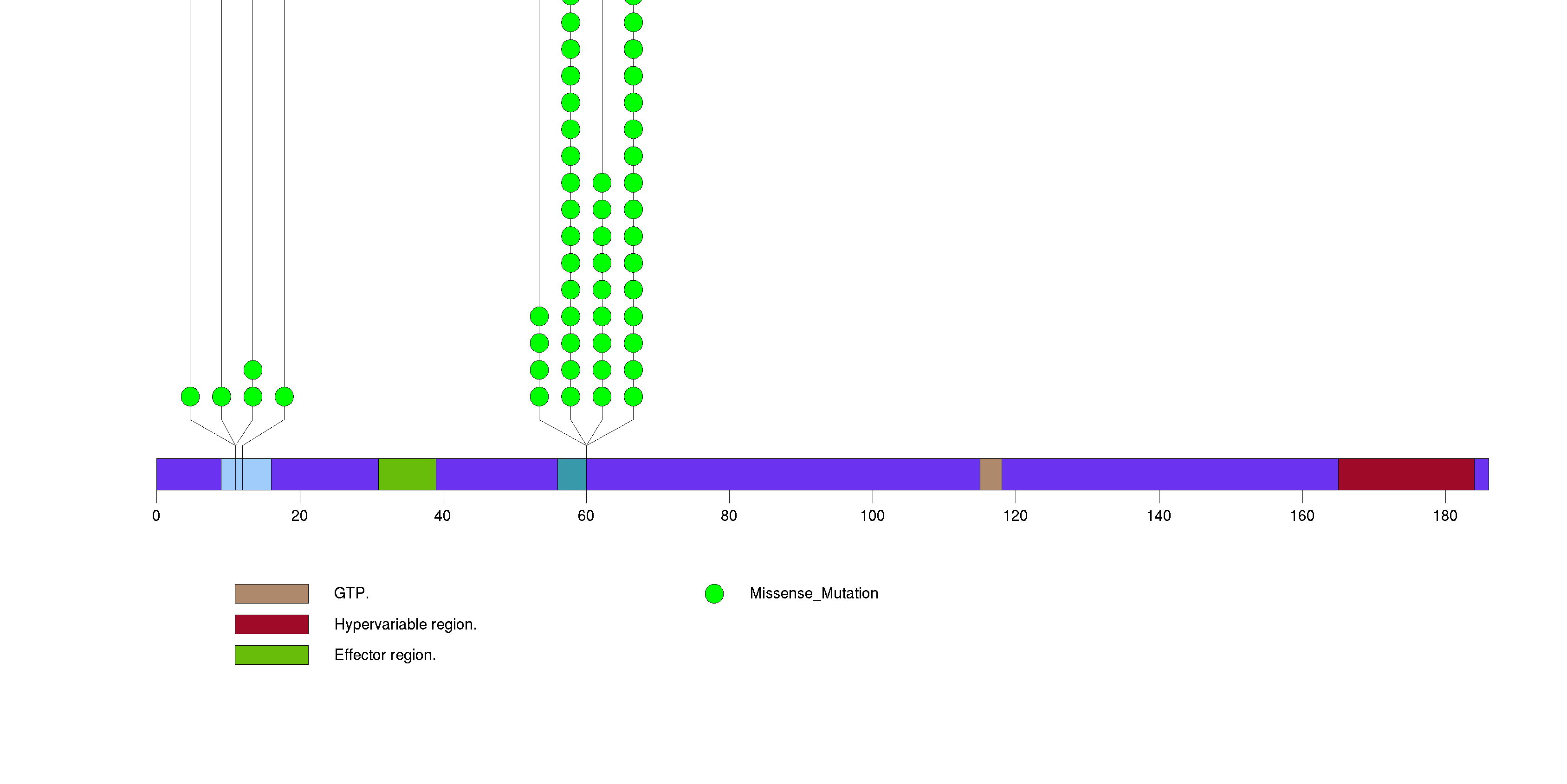
Figure S2. This figure depicts the distribution of mutations and mutation types across the CDKN2A significant gene.
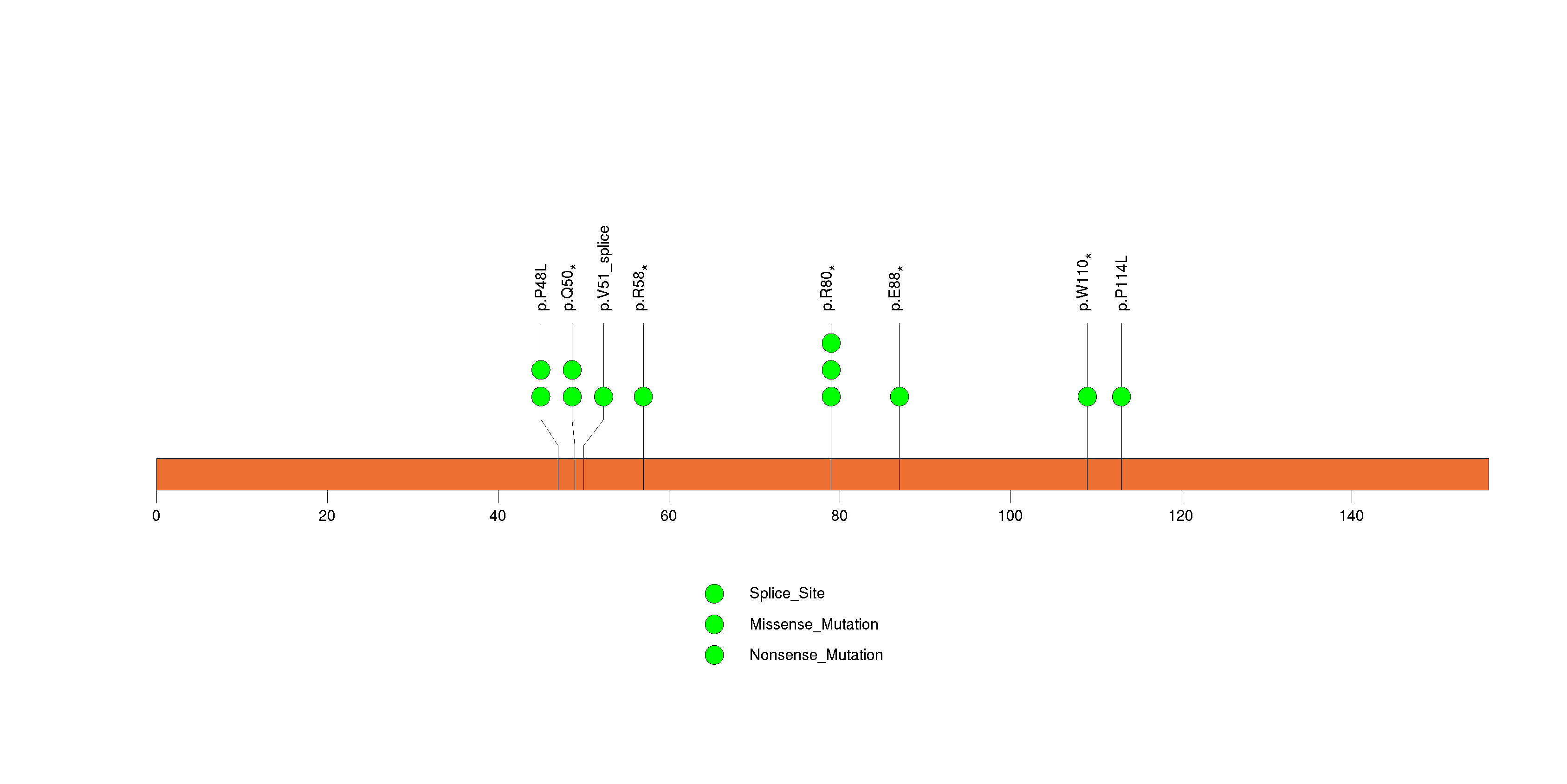
Figure S3. This figure depicts the distribution of mutations and mutation types across the MUM1L1 significant gene.
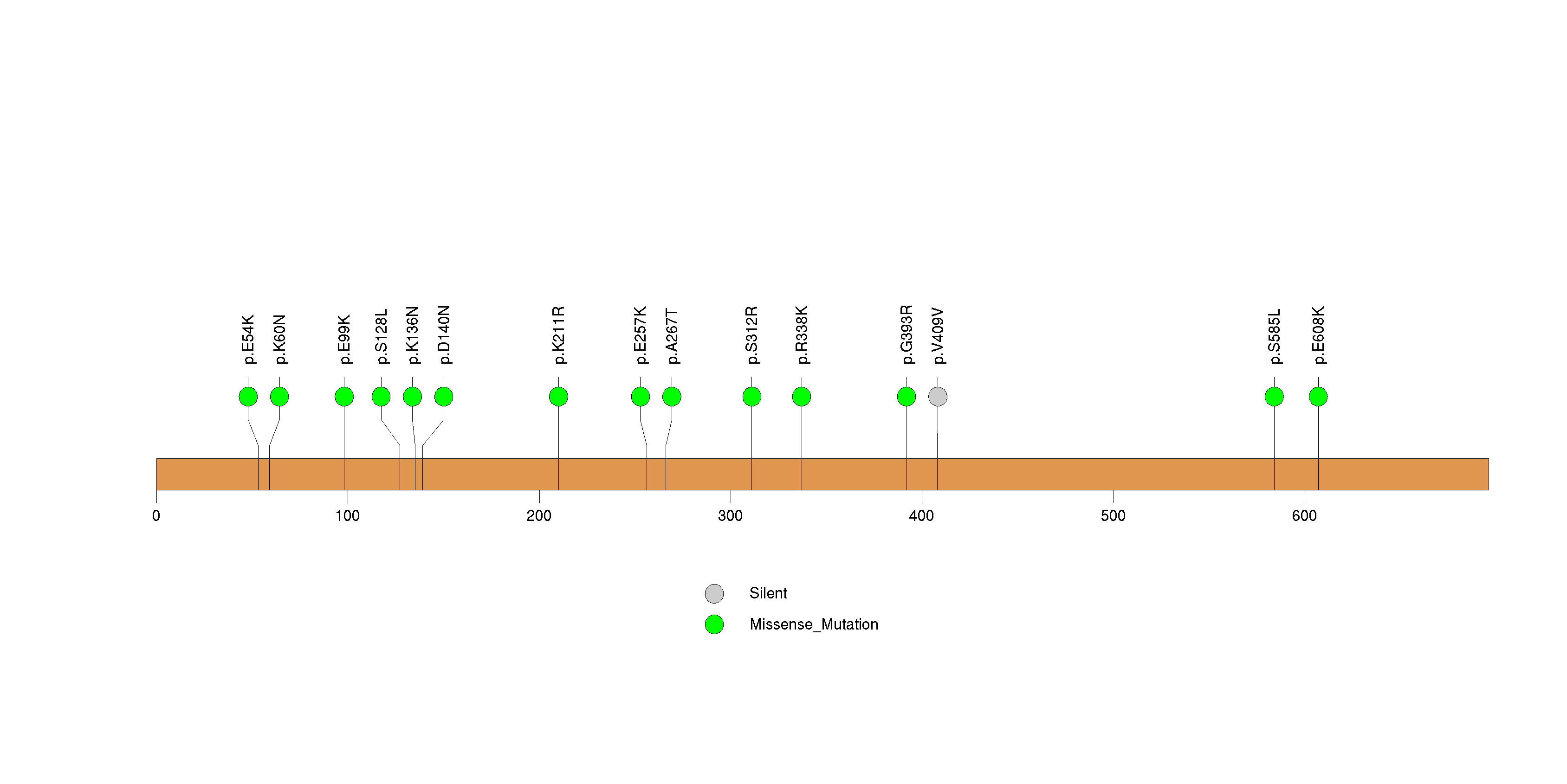
Figure S4. This figure depicts the distribution of mutations and mutation types across the TP53 significant gene.

Figure S5. This figure depicts the distribution of mutations and mutation types across the CD163L1 significant gene.
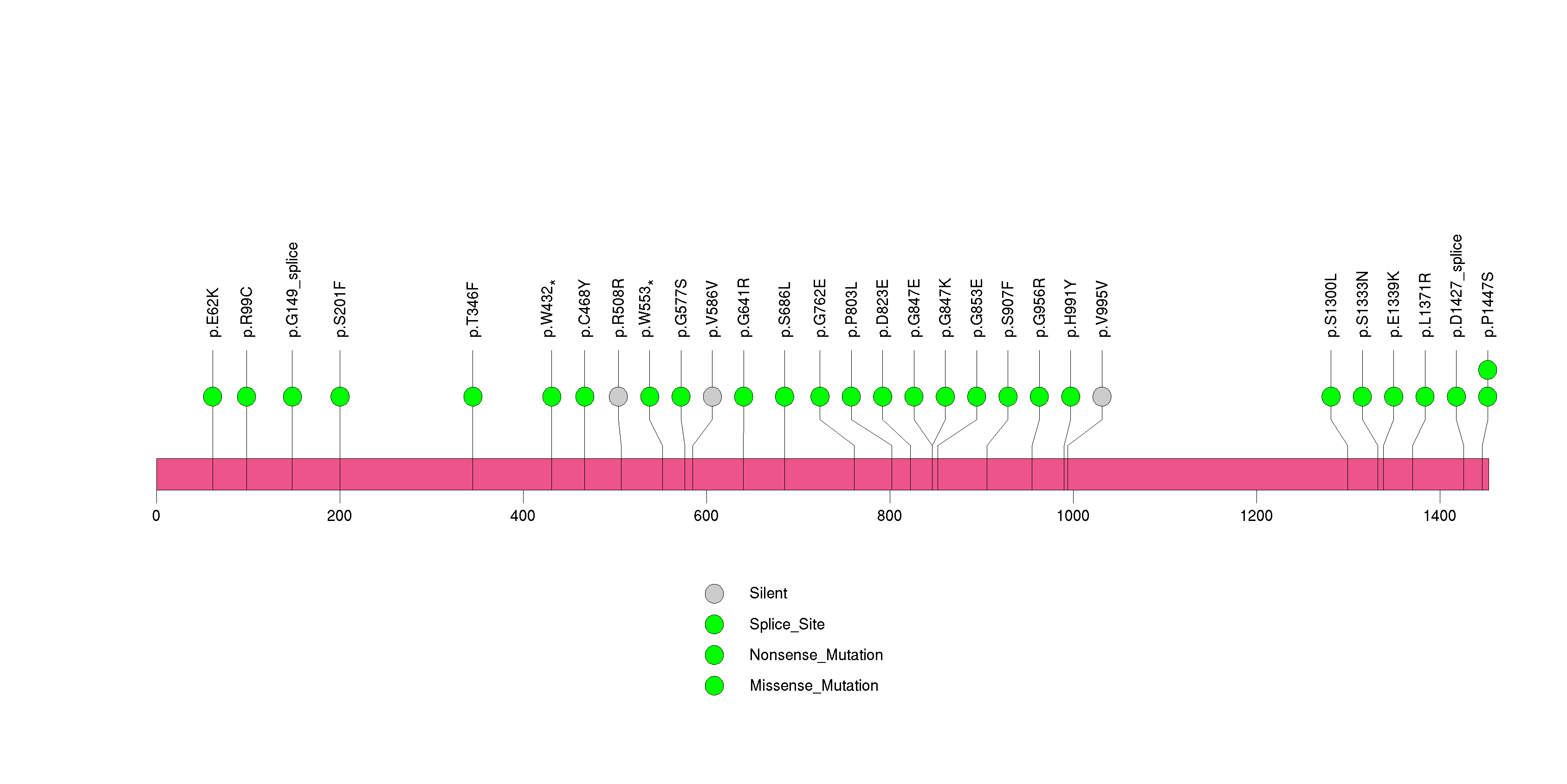
Figure S6. This figure depicts the distribution of mutations and mutation types across the PPP6C significant gene.
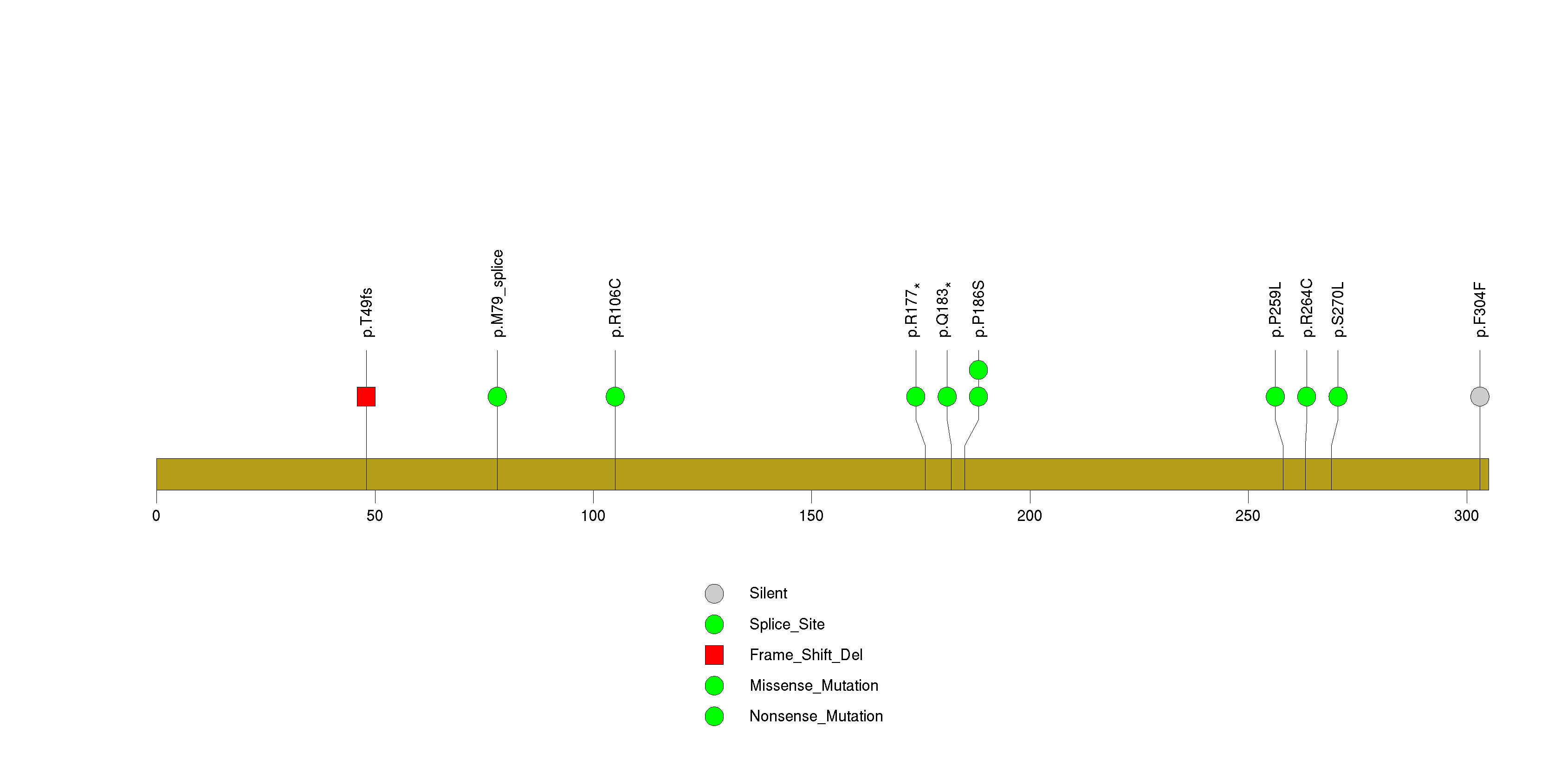
Figure S7. This figure depicts the distribution of mutations and mutation types across the KHDRBS2 significant gene.
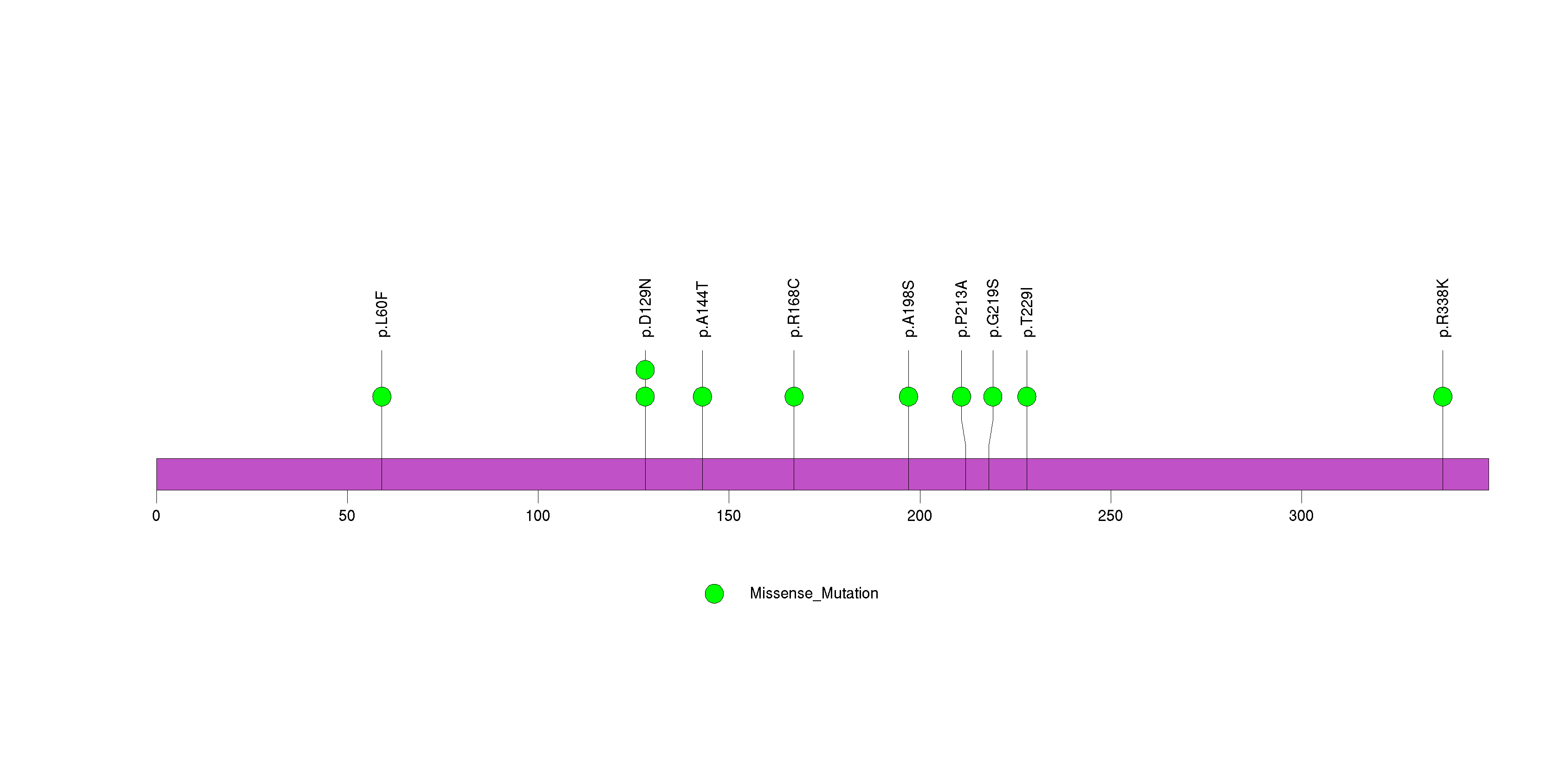
Figure S8. This figure depicts the distribution of mutations and mutation types across the PSG4 significant gene.
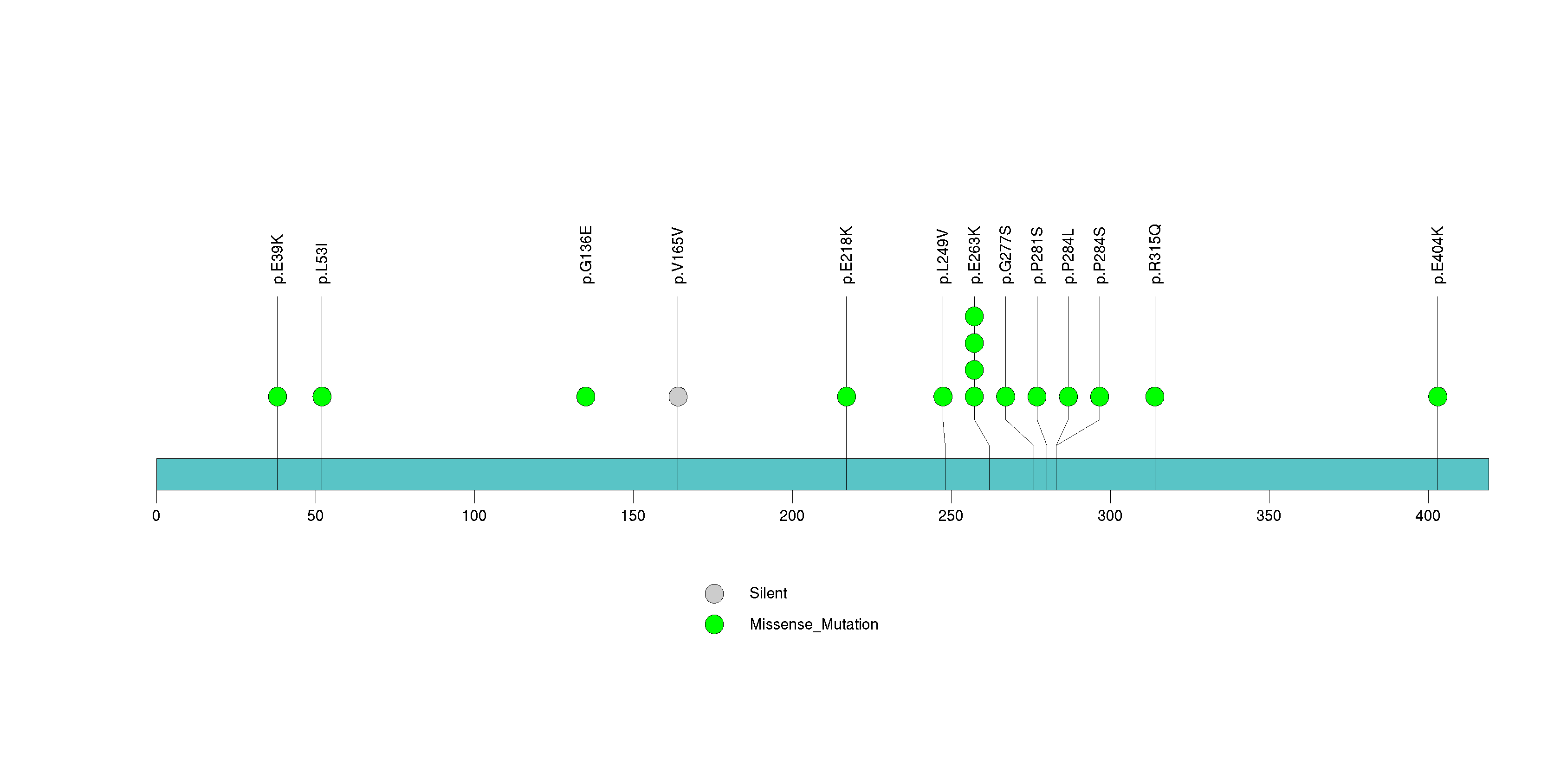
Figure S9. This figure depicts the distribution of mutations and mutation types across the GLRB significant gene.
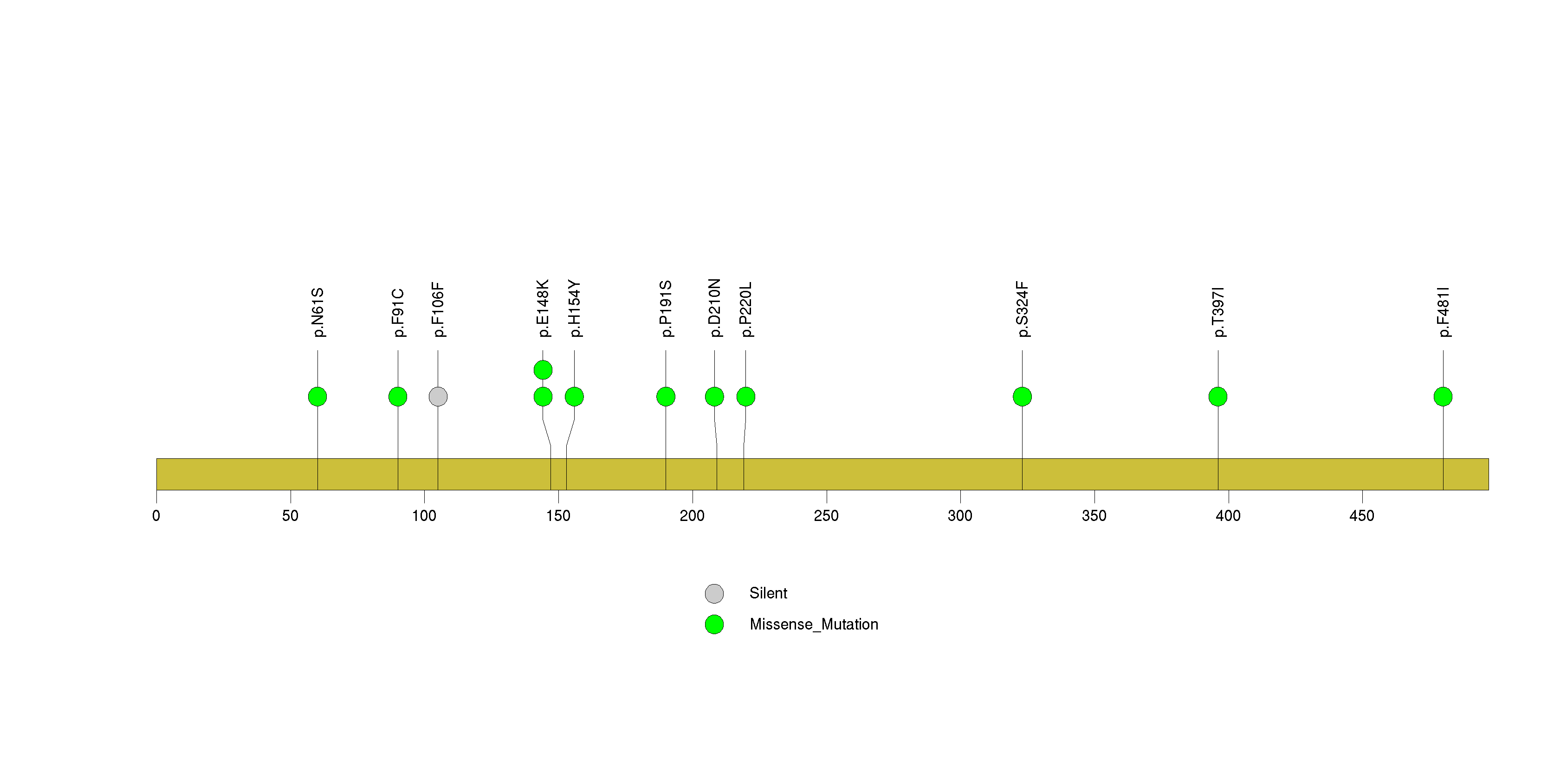
Figure S10. This figure depicts the distribution of mutations and mutation types across the MARCO significant gene.
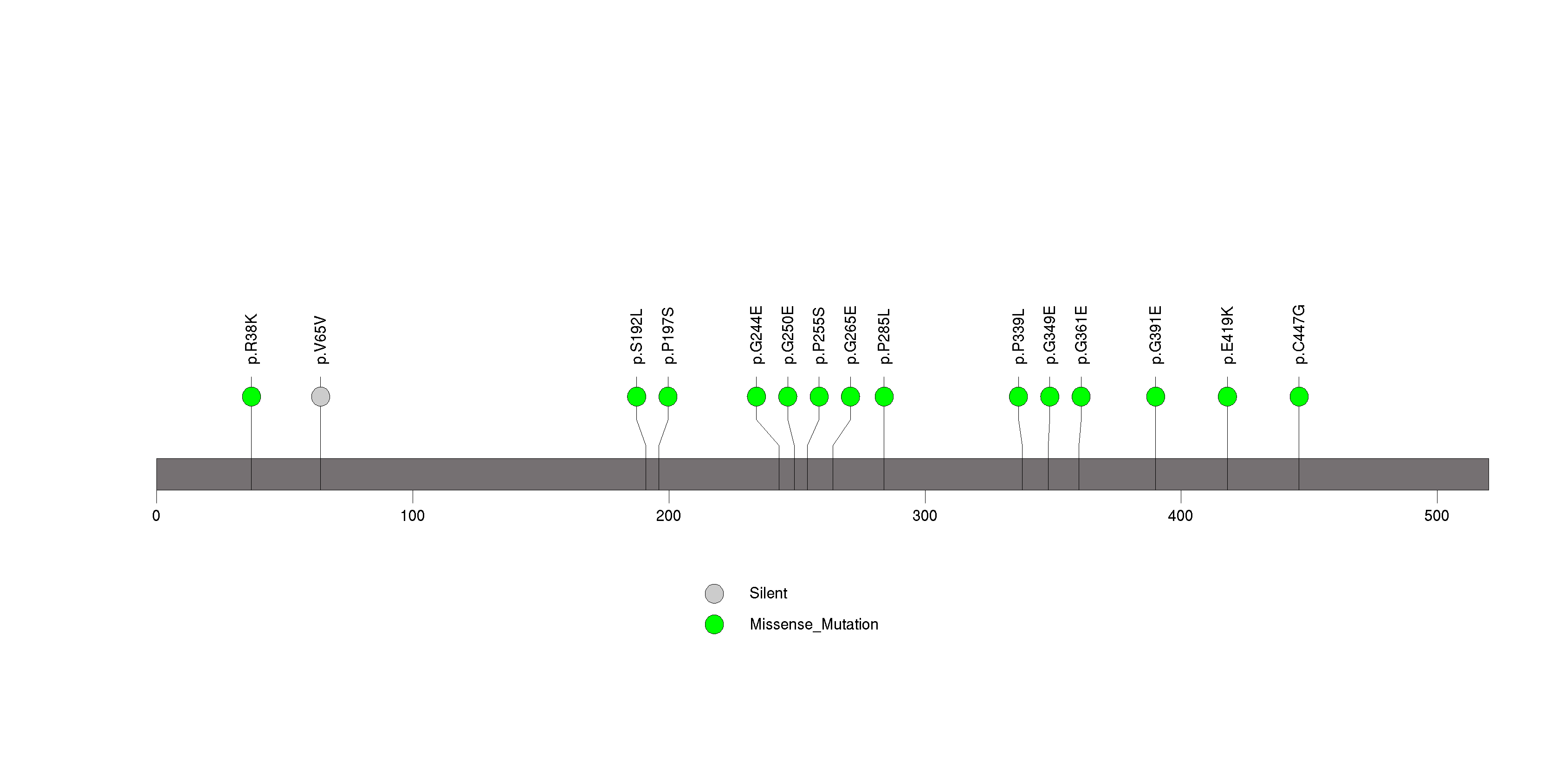
Figure S11. This figure depicts the distribution of mutations and mutation types across the SGCZ significant gene.

Figure S12. This figure depicts the distribution of mutations and mutation types across the POTEG significant gene.
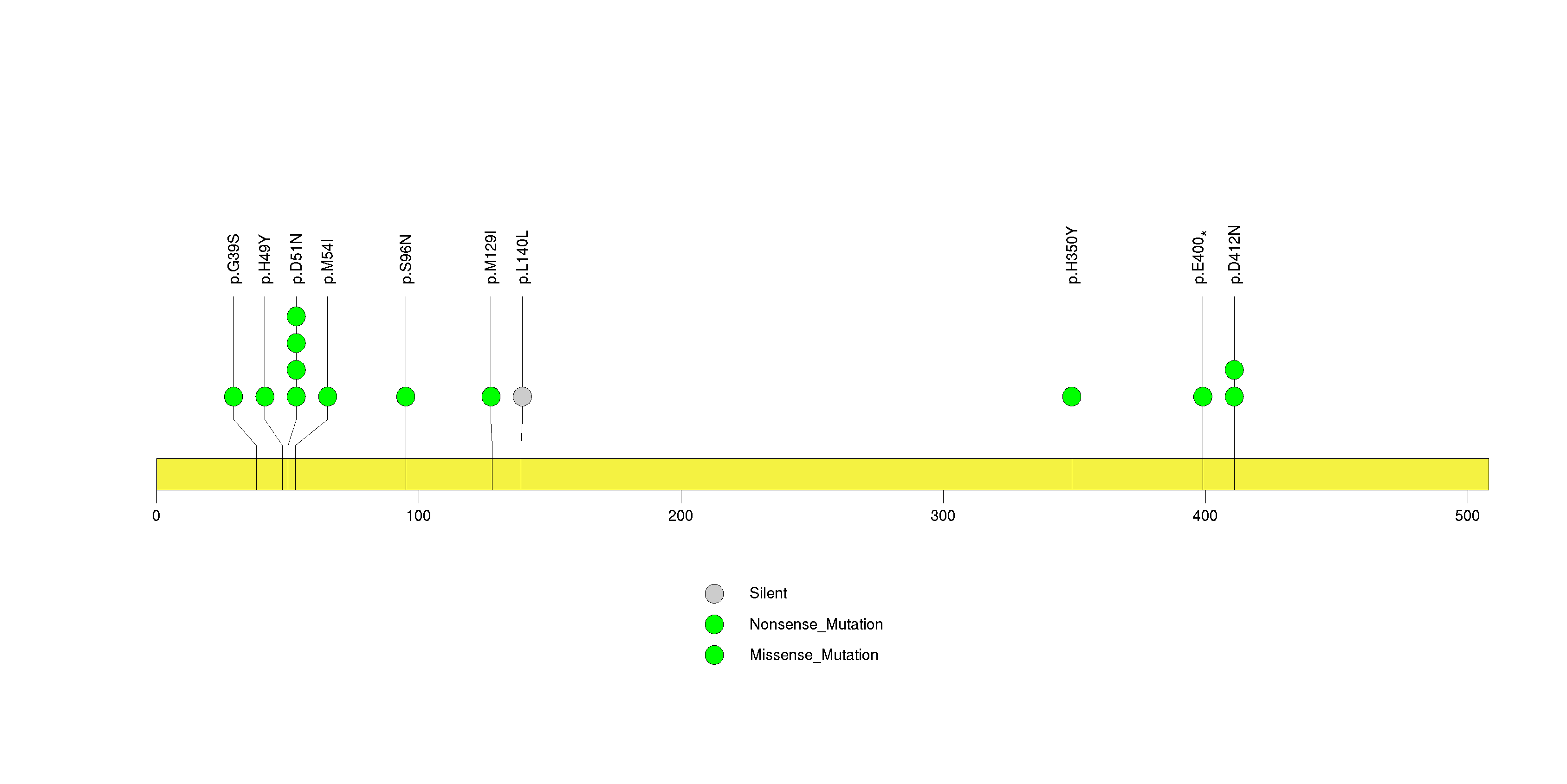
Figure S13. This figure depicts the distribution of mutations and mutation types across the UGT2B28 significant gene.
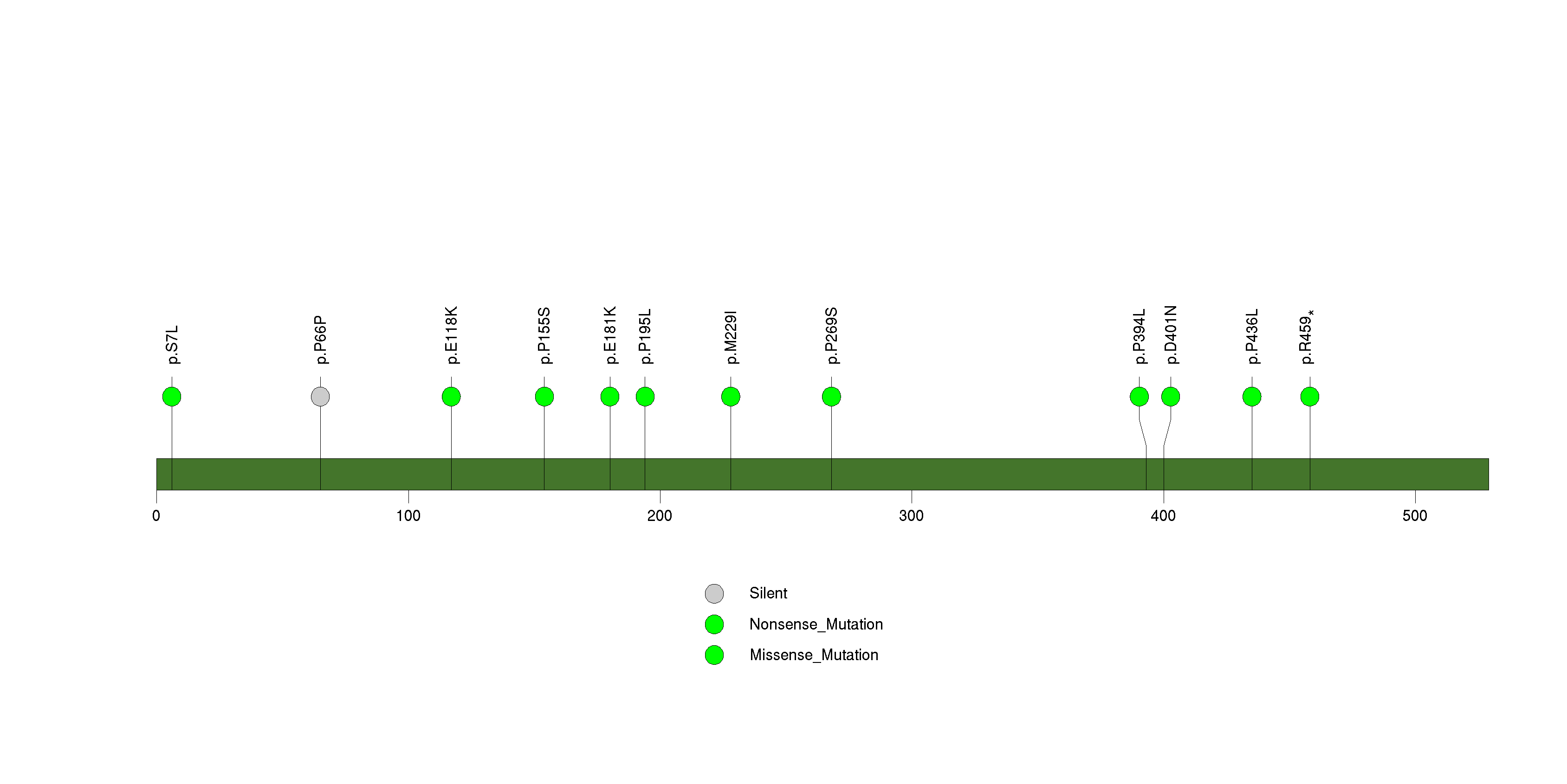
Figure S14. This figure depicts the distribution of mutations and mutation types across the ZNF676 significant gene.
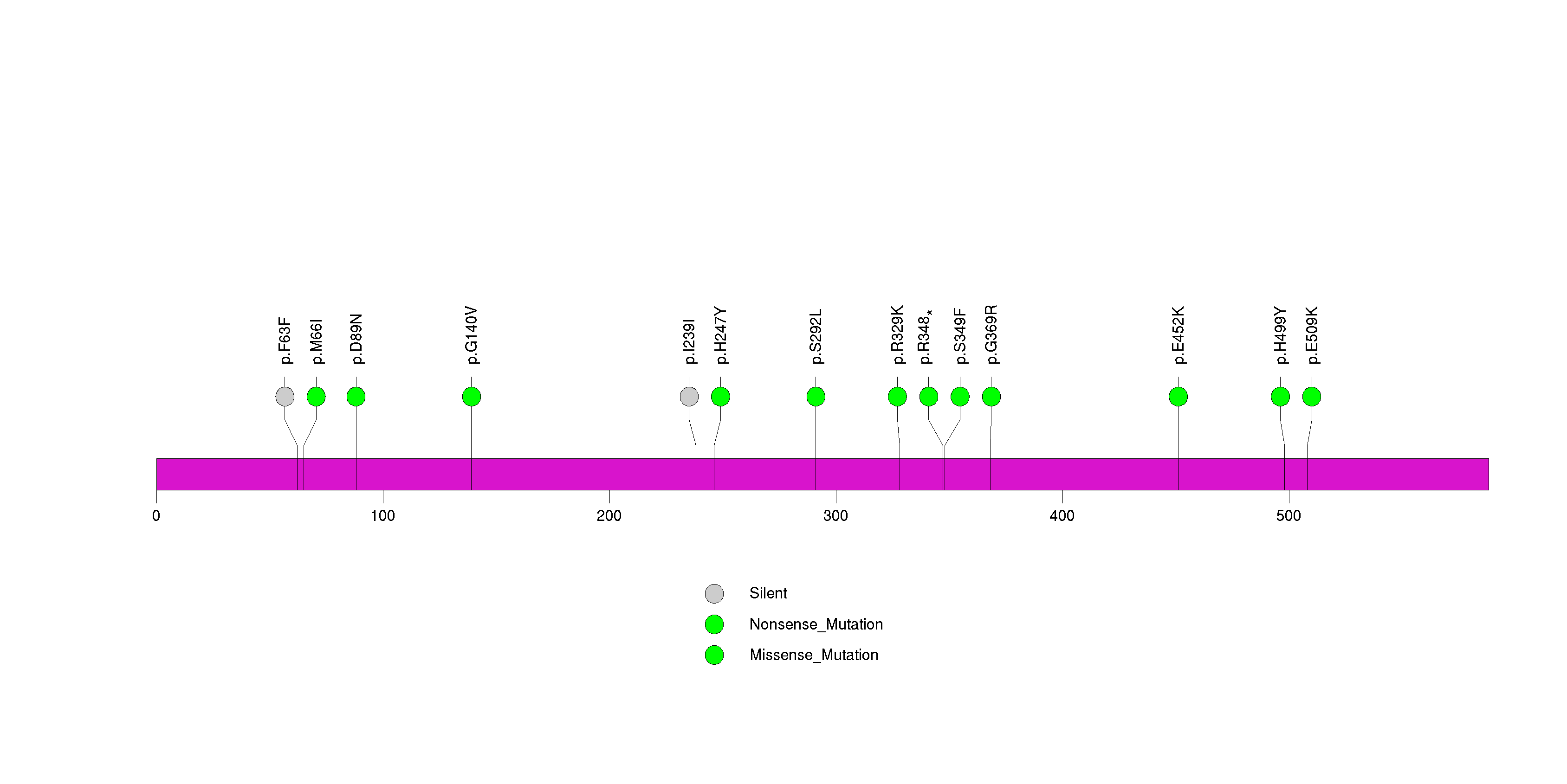
Figure S15. This figure depicts the distribution of mutations and mutation types across the LIPI significant gene.

Figure S16. This figure depicts the distribution of mutations and mutation types across the HIST1H2AA significant gene.
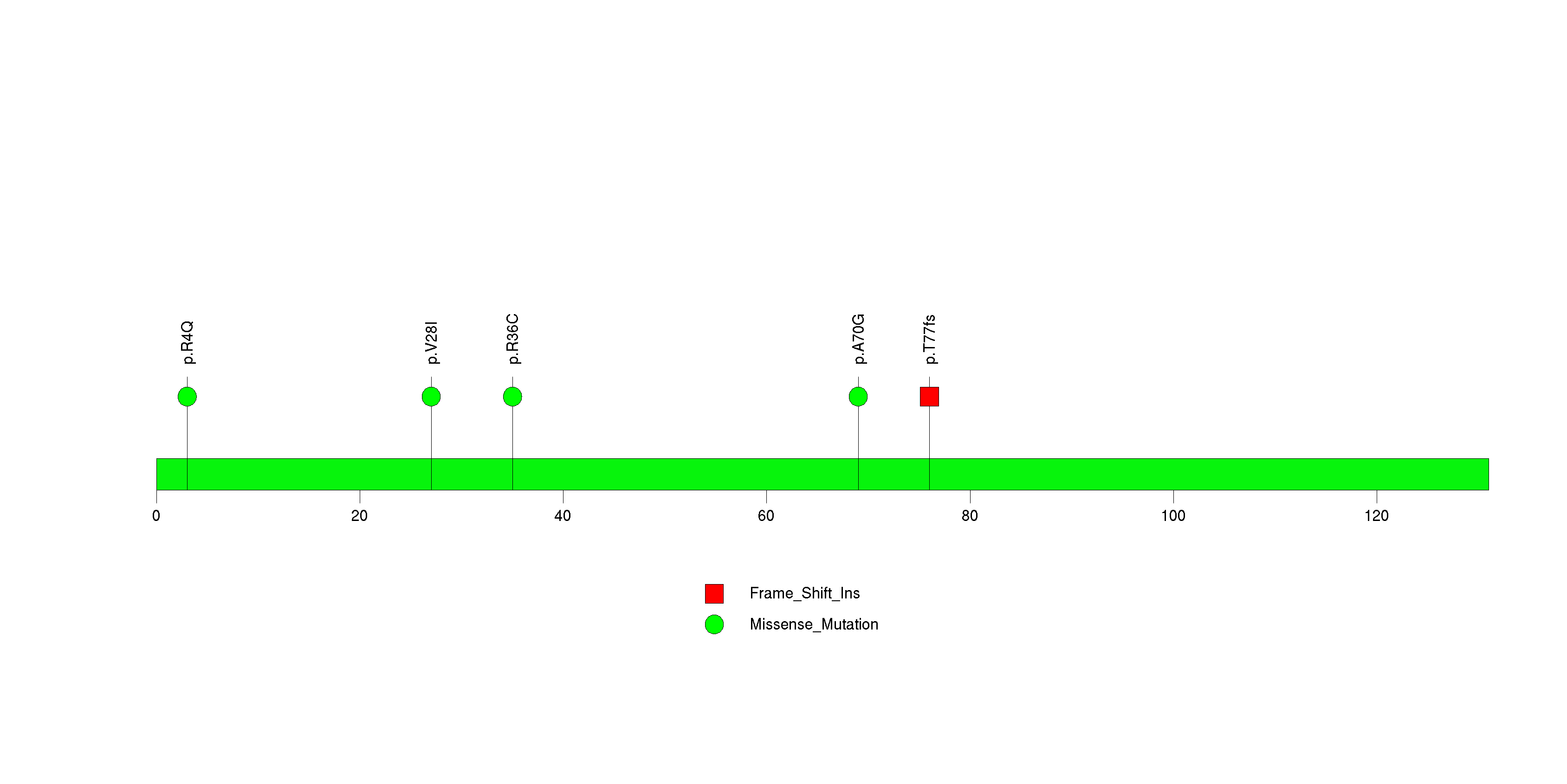
Figure S17. This figure depicts the distribution of mutations and mutation types across the STXBP5L significant gene.
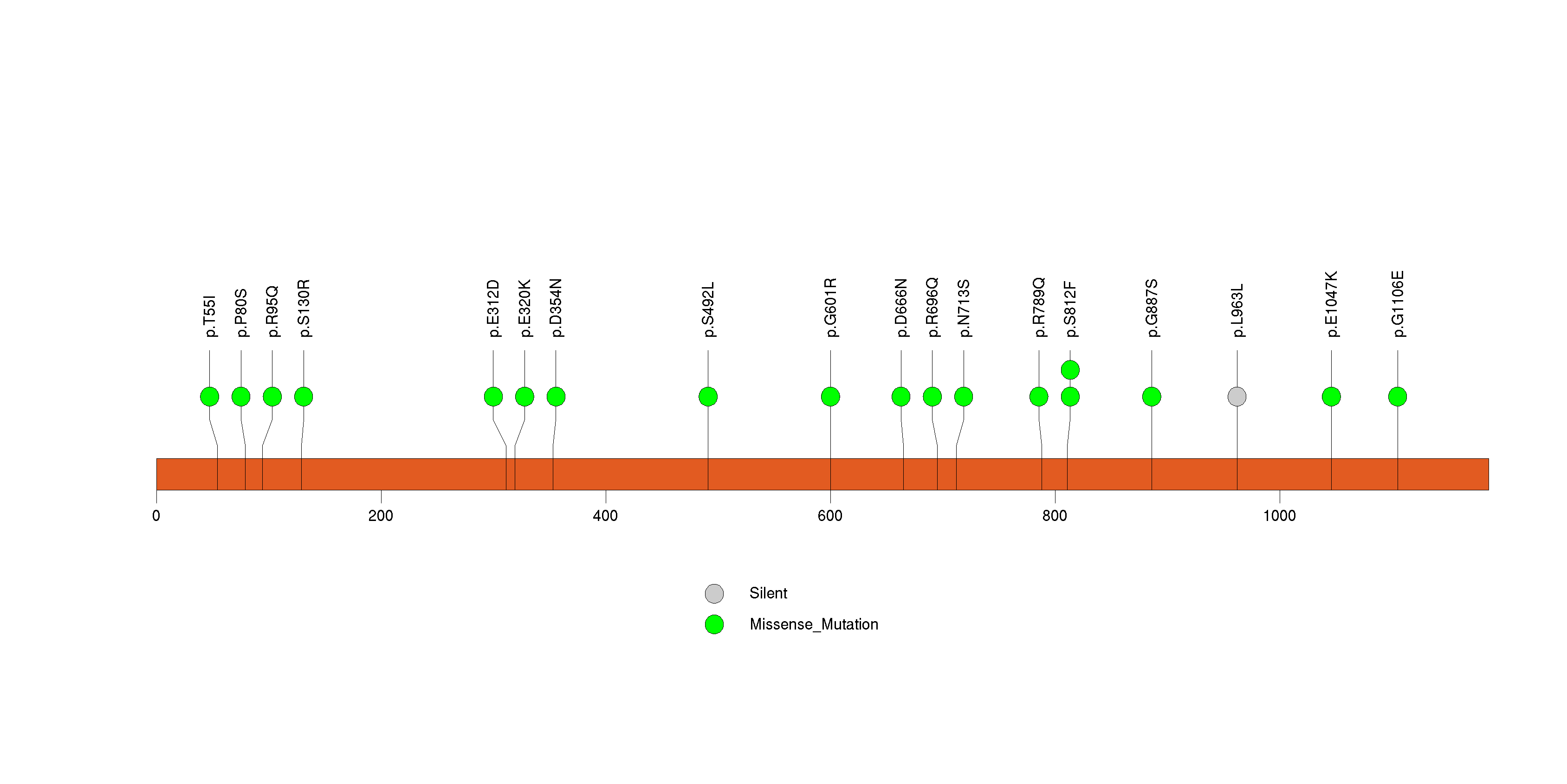
Figure S18. This figure depicts the distribution of mutations and mutation types across the UGT2B4 significant gene.
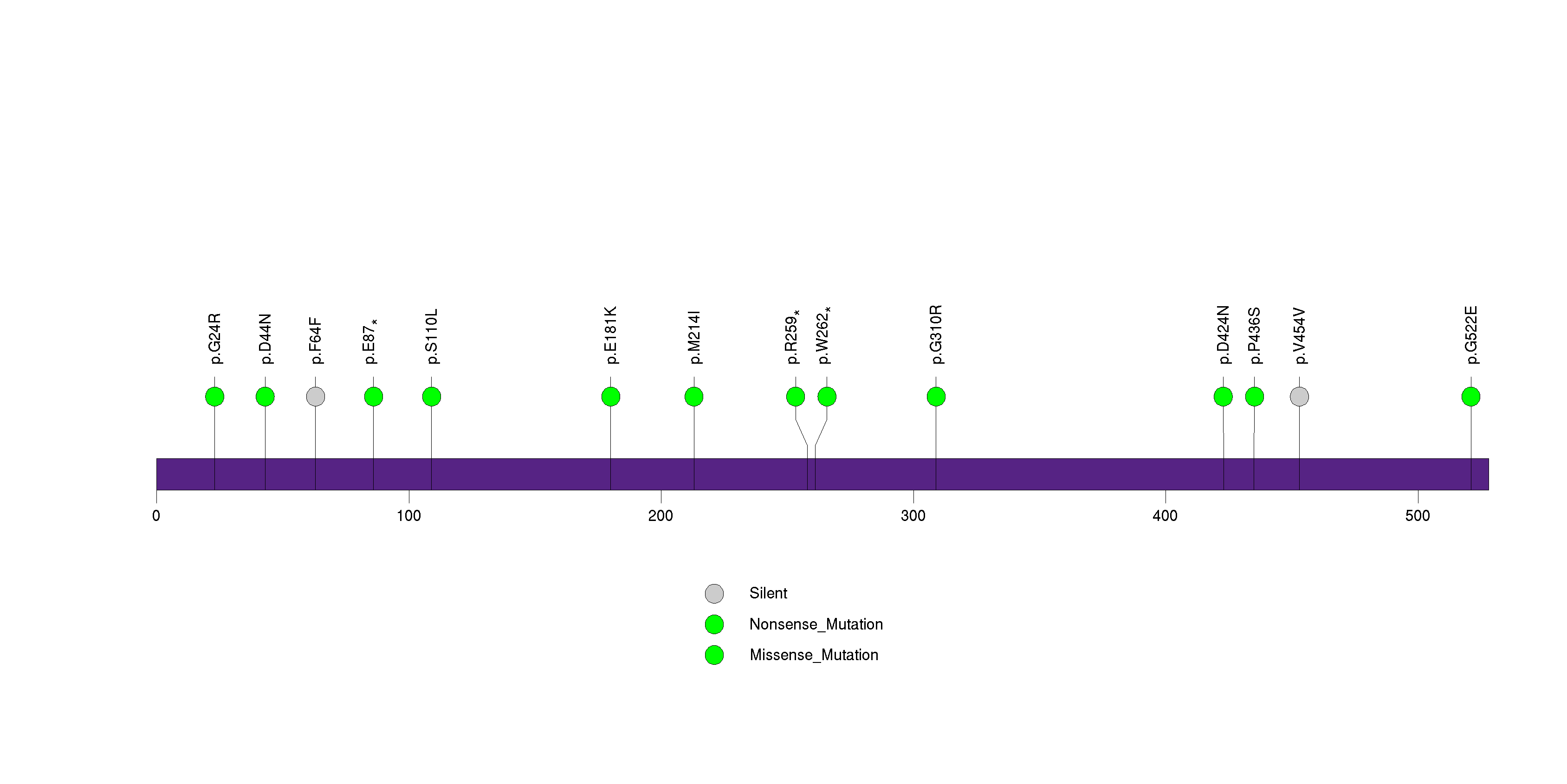
Figure S19. This figure depicts the distribution of mutations and mutation types across the CNGB3 significant gene.
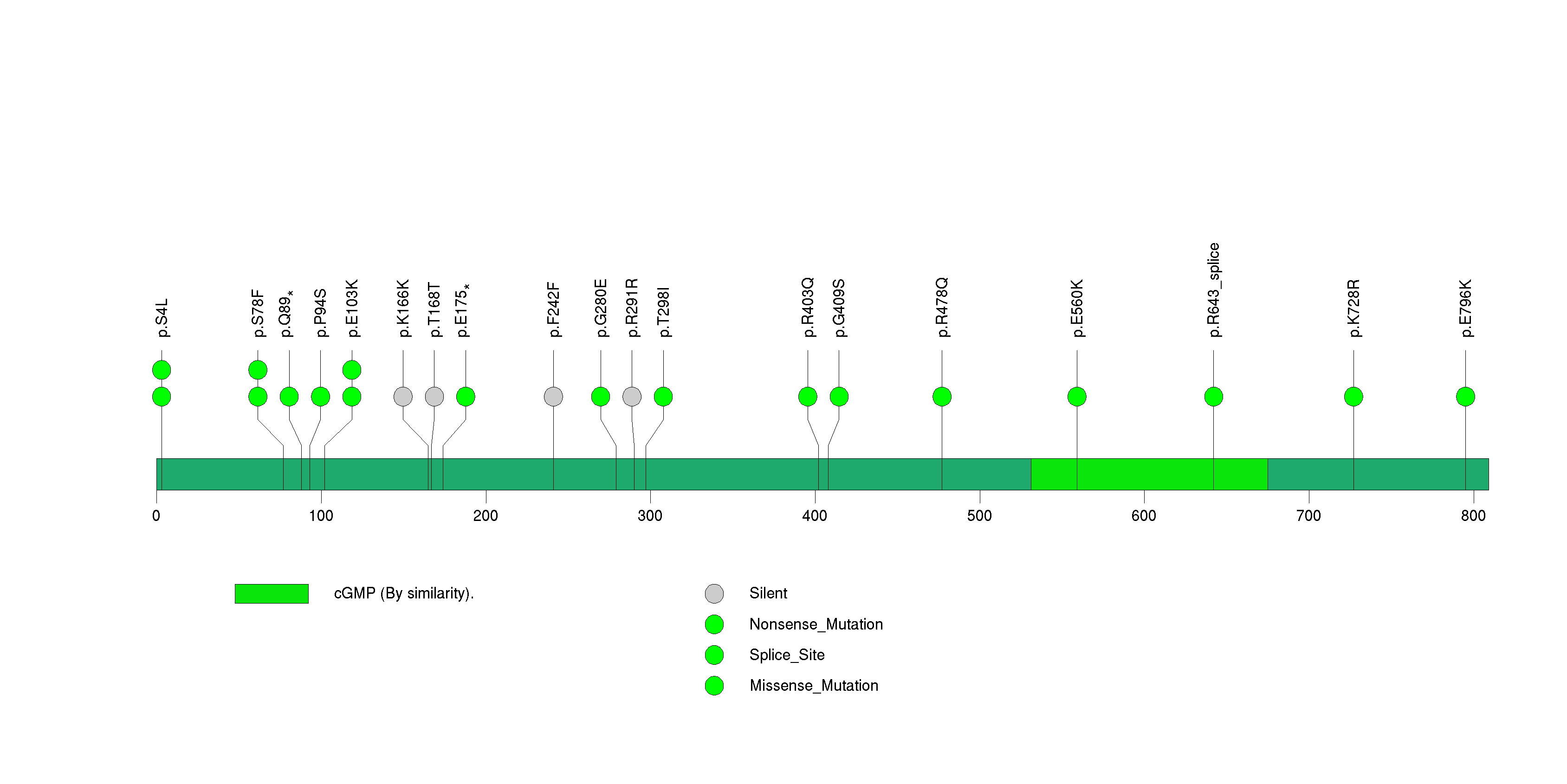
Figure S20. This figure depicts the distribution of mutations and mutation types across the CADM2 significant gene.
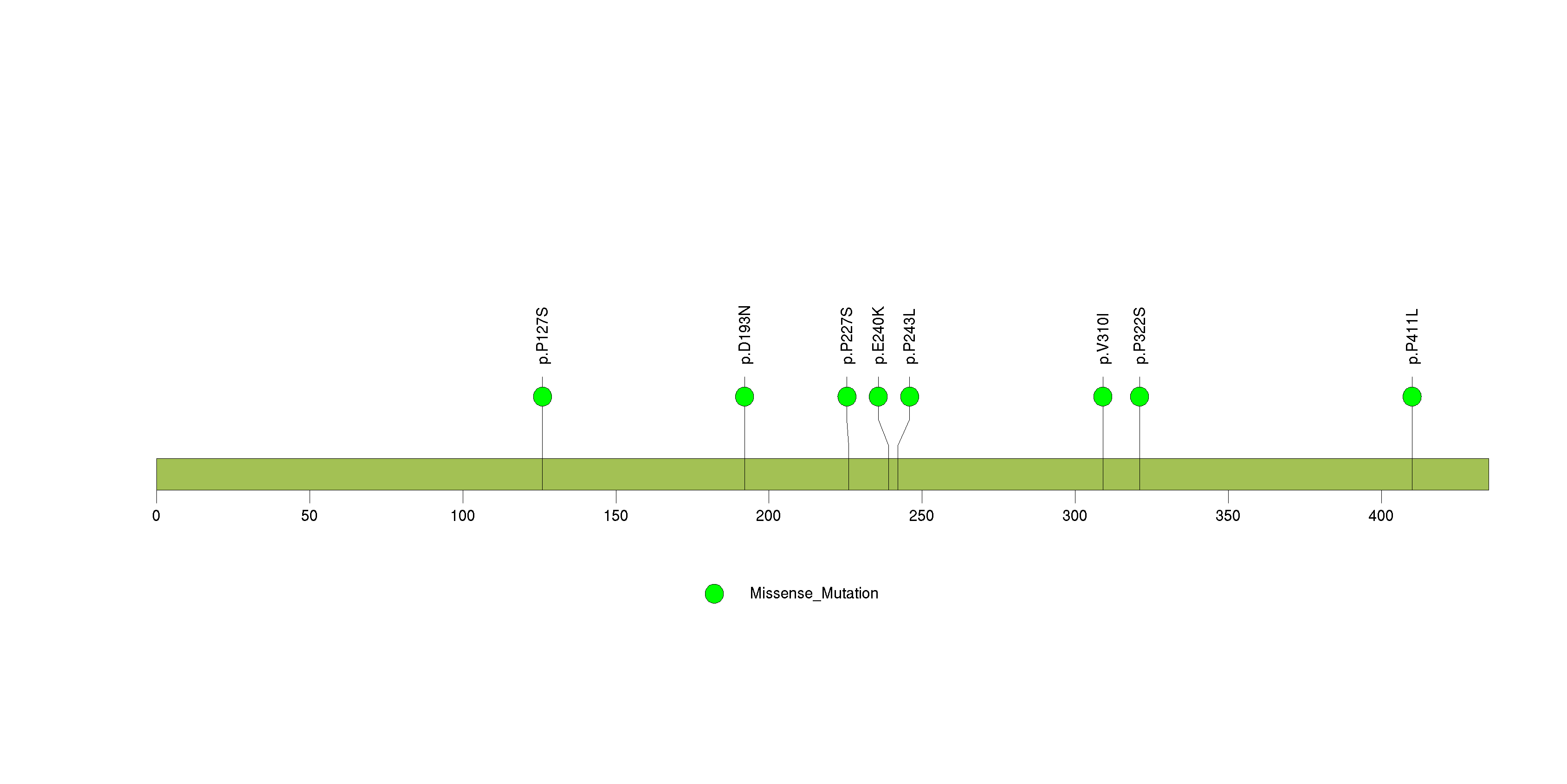
Figure S21. This figure depicts the distribution of mutations and mutation types across the OR10G8 significant gene.
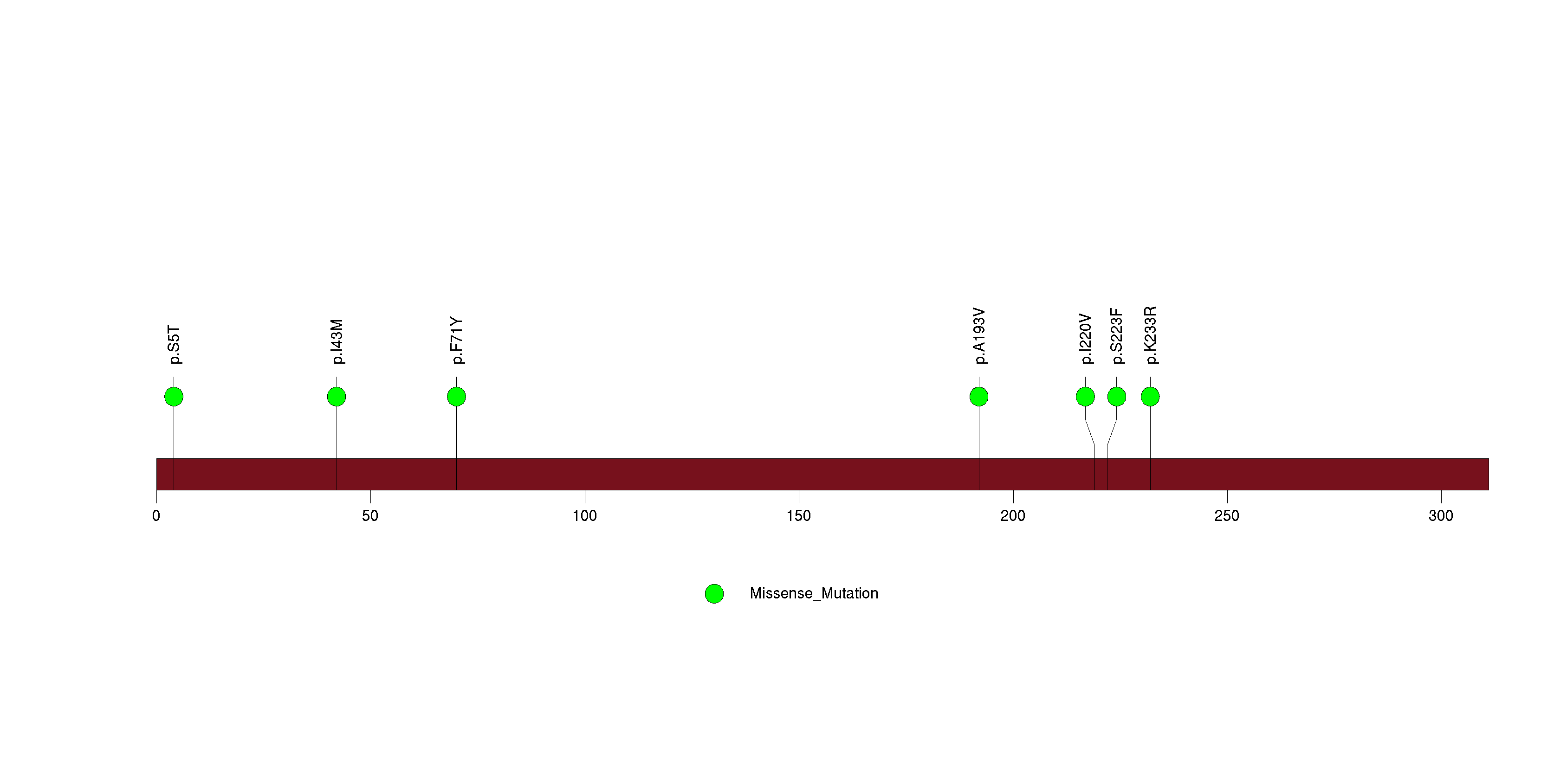
Figure S22. This figure depicts the distribution of mutations and mutation types across the OR2W1 significant gene.
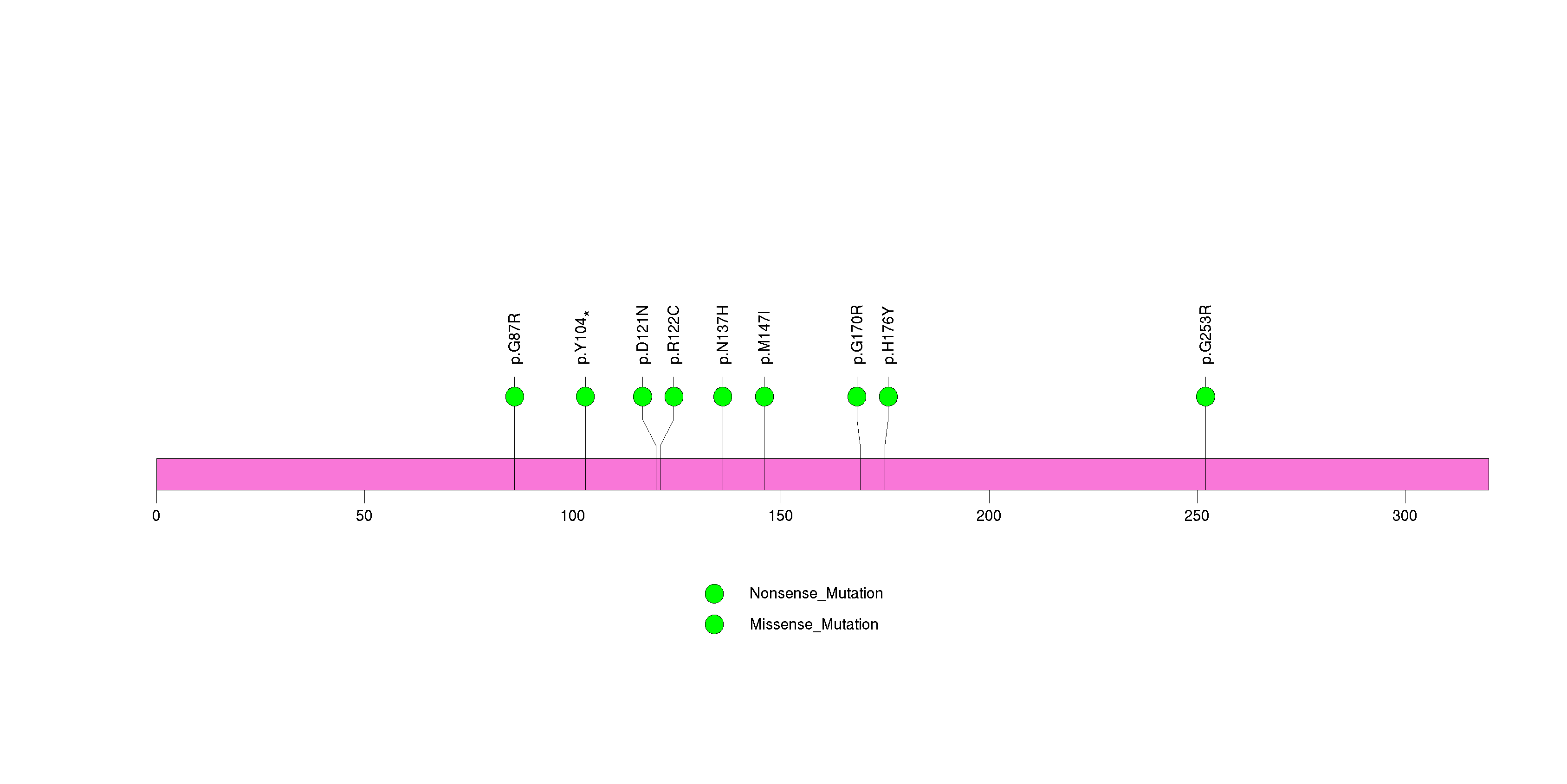
Figure S23. This figure depicts the distribution of mutations and mutation types across the OR2G6 significant gene.
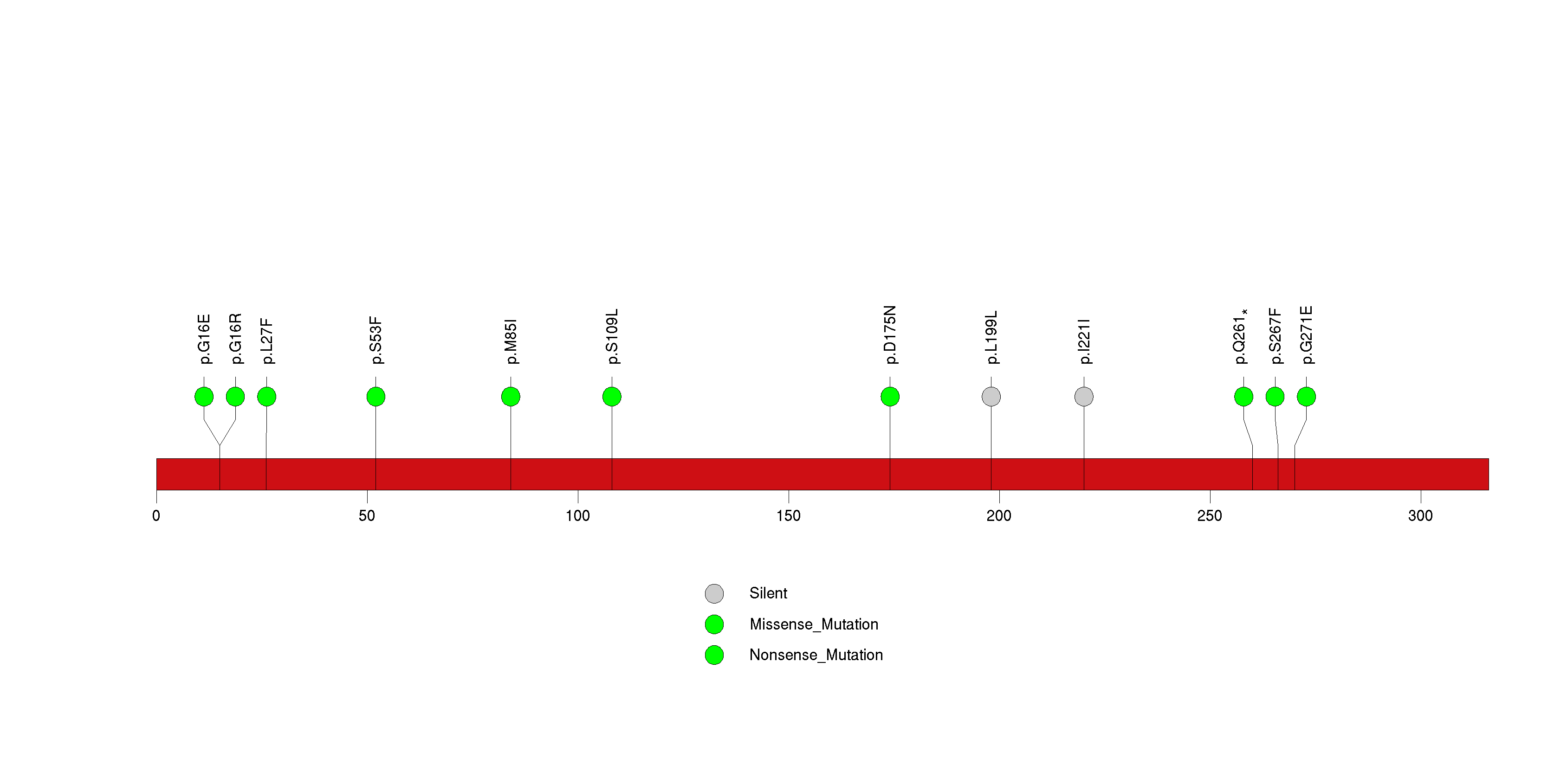
Figure S24. This figure depicts the distribution of mutations and mutation types across the ST8SIA3 significant gene.
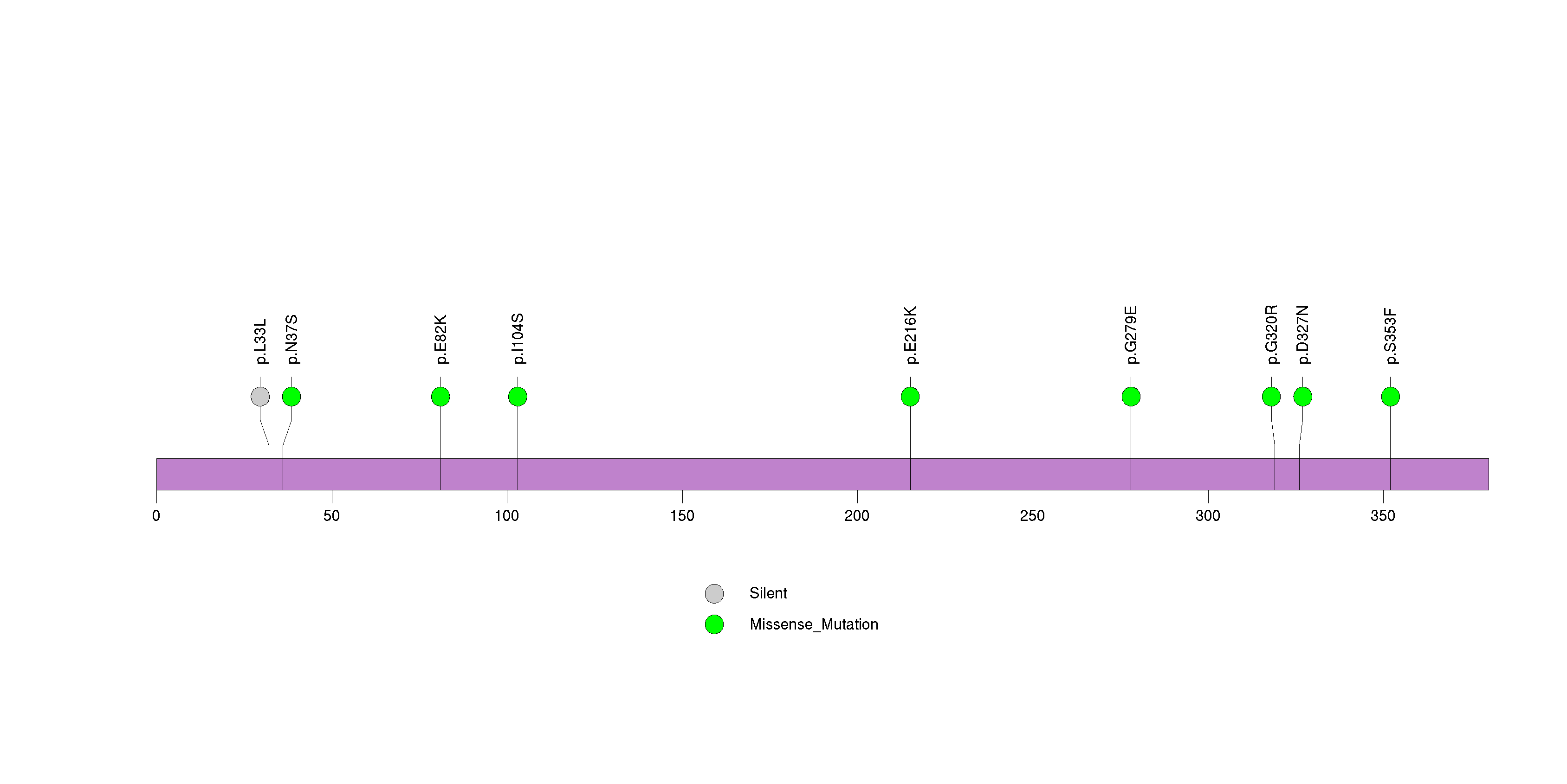
Figure S25. This figure depicts the distribution of mutations and mutation types across the OR10K2 significant gene.
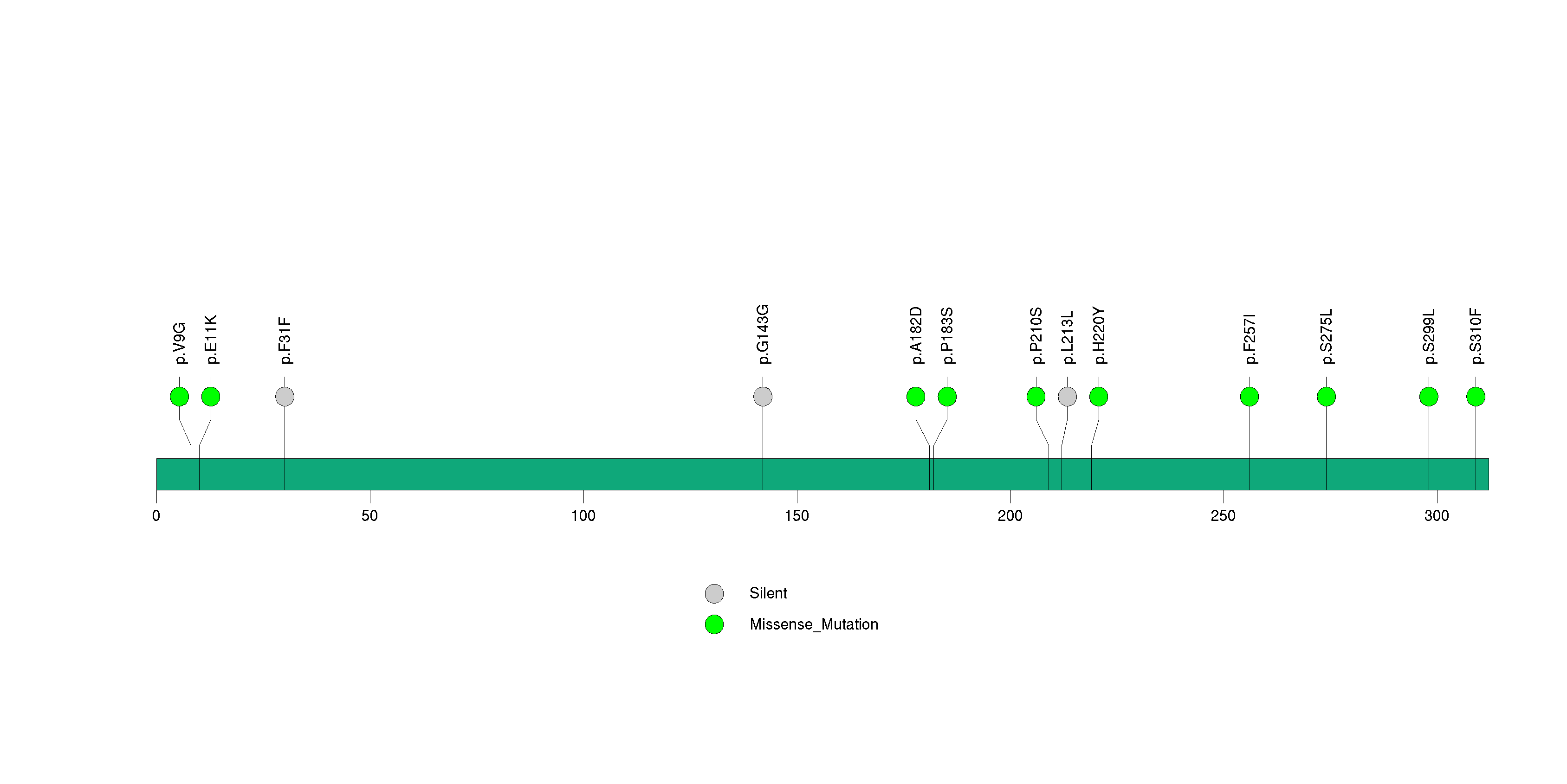
Figure S26. This figure depicts the distribution of mutations and mutation types across the CDH9 significant gene.
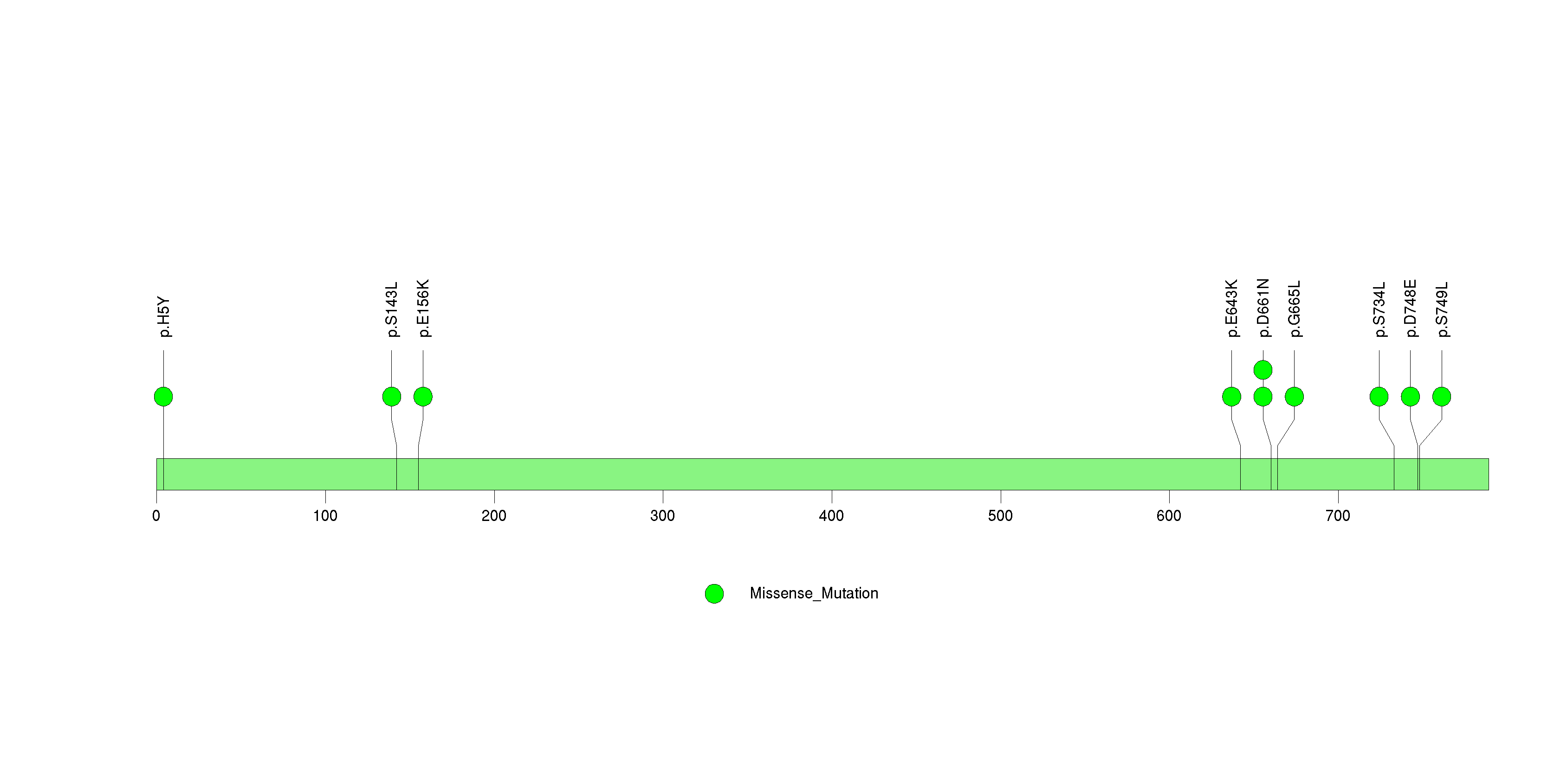
Figure S27. This figure depicts the distribution of mutations and mutation types across the PCDH18 significant gene.
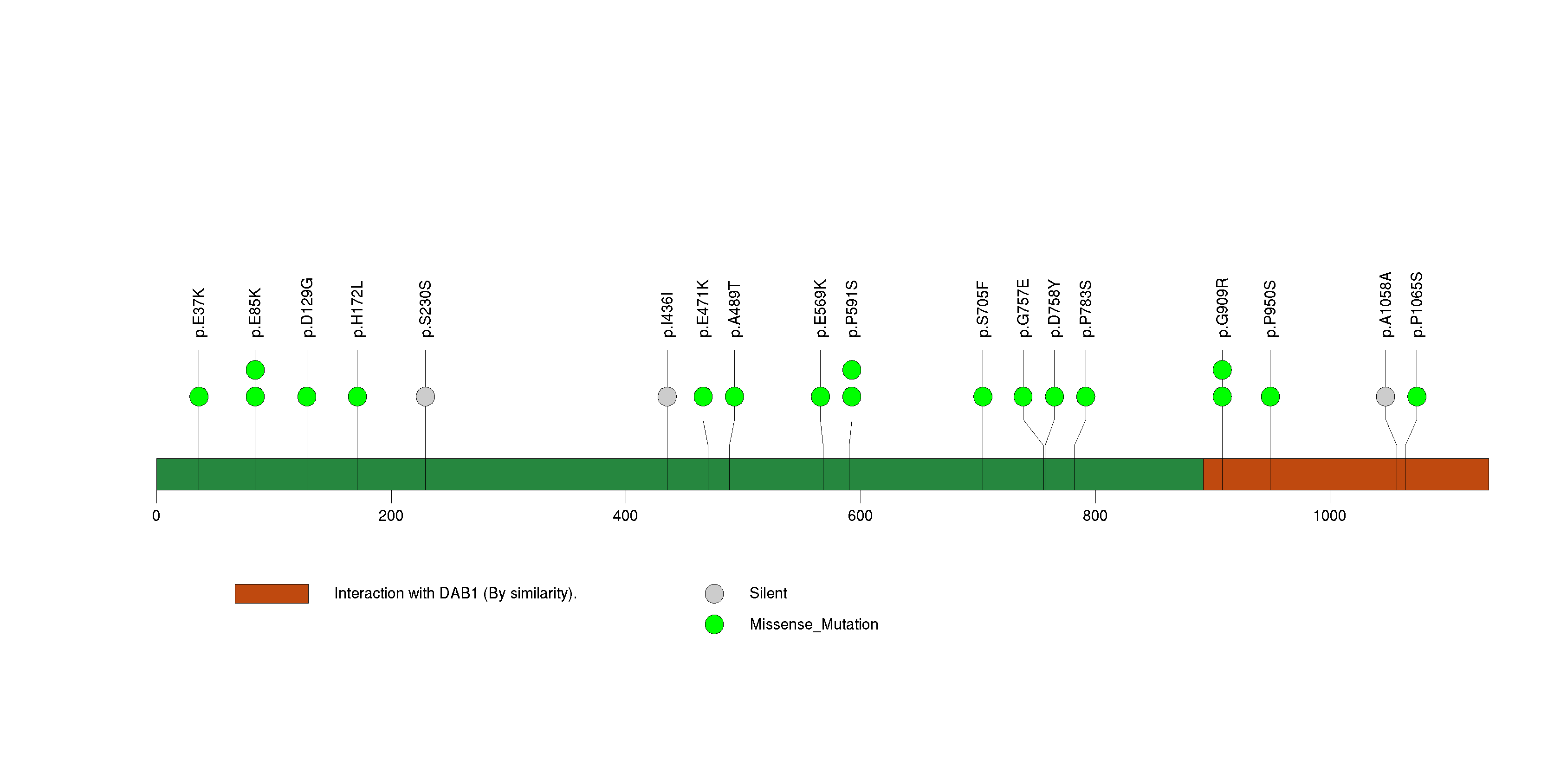
Figure S28. This figure depicts the distribution of mutations and mutation types across the BCLAF1 significant gene.

Figure S29. This figure depicts the distribution of mutations and mutation types across the SPOCK3 significant gene.
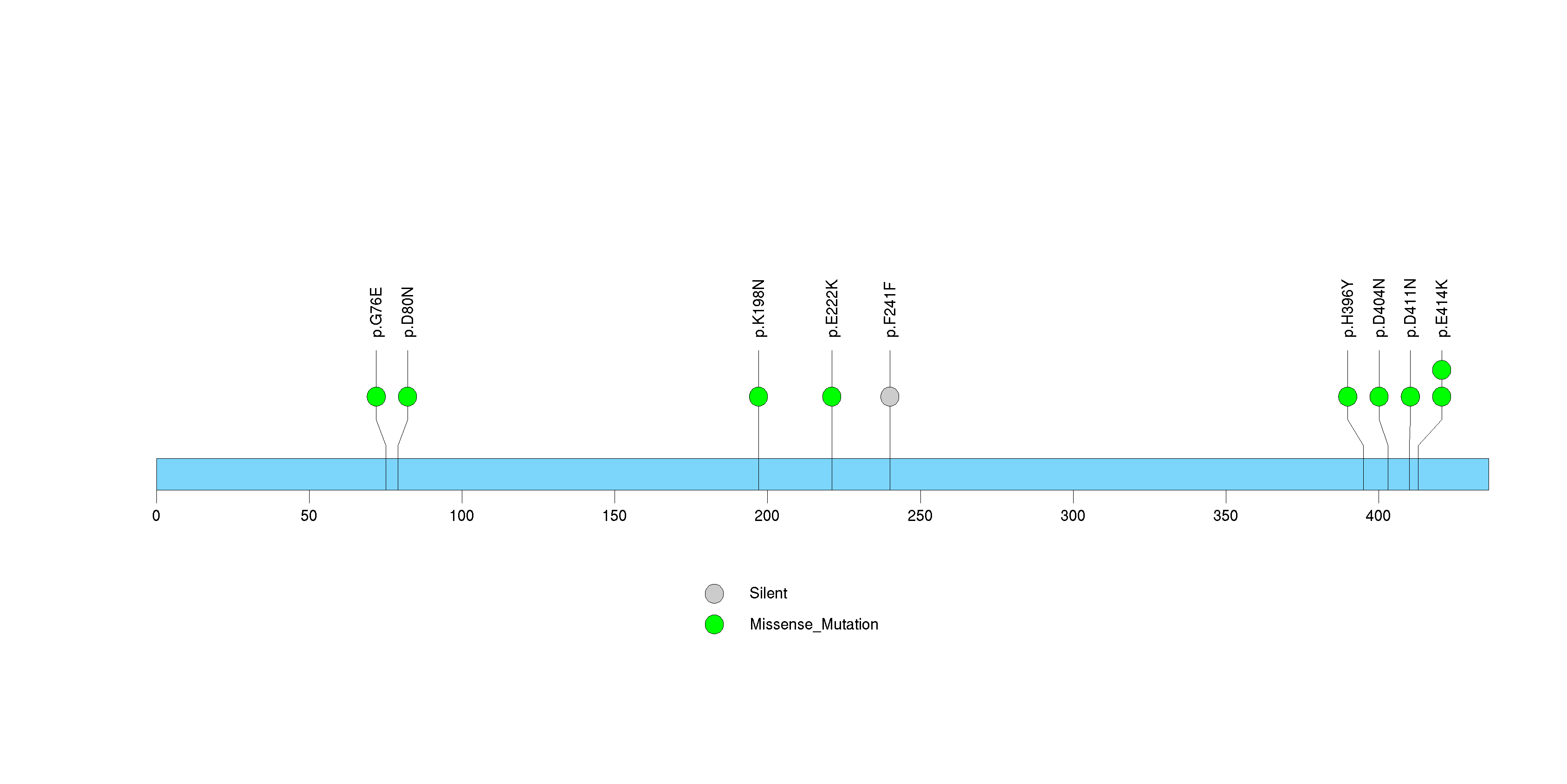
Figure S30. This figure depicts the distribution of mutations and mutation types across the GFRAL significant gene.
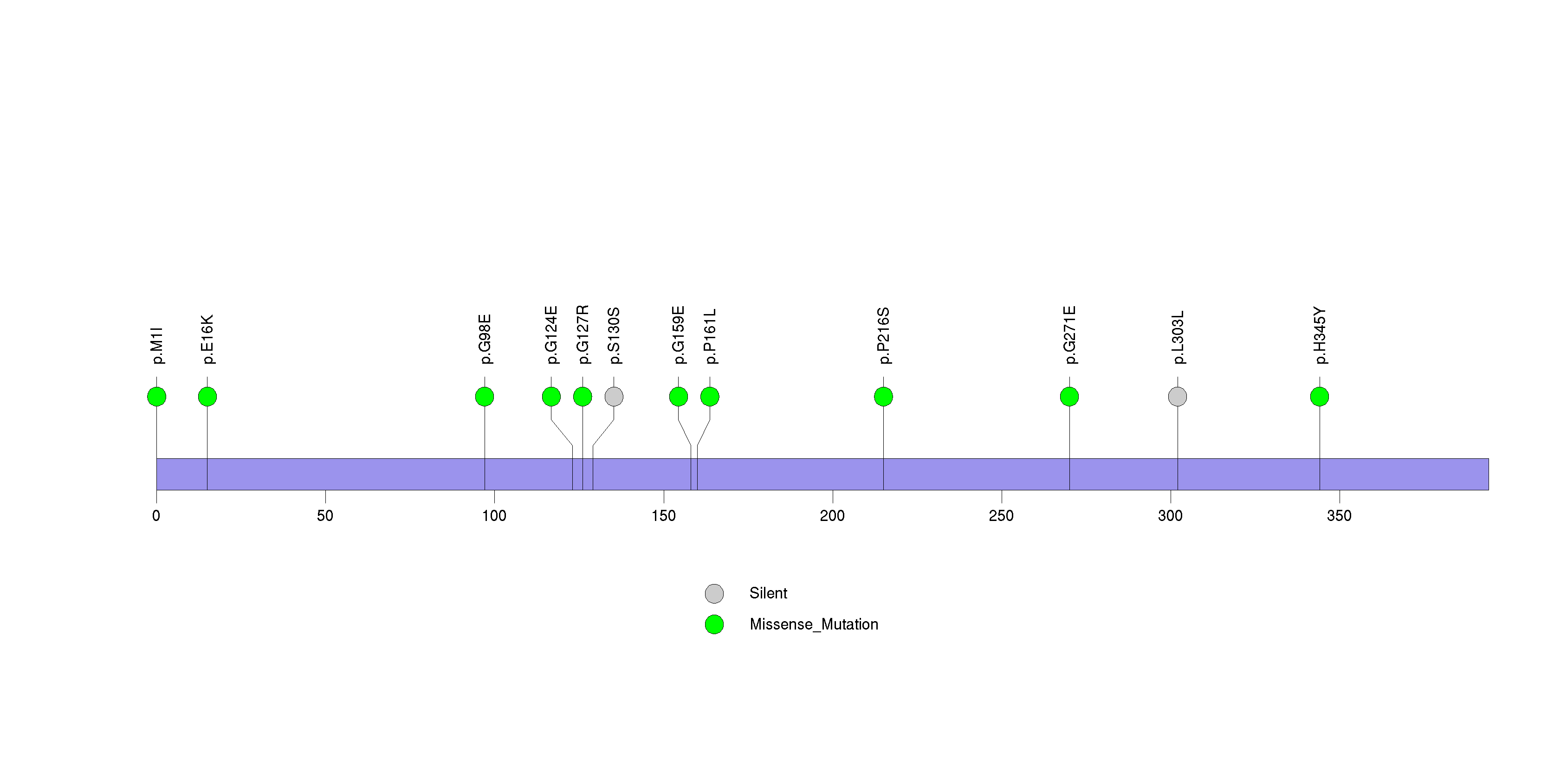
Figure S31. This figure depicts the distribution of mutations and mutation types across the TPTE2 significant gene.
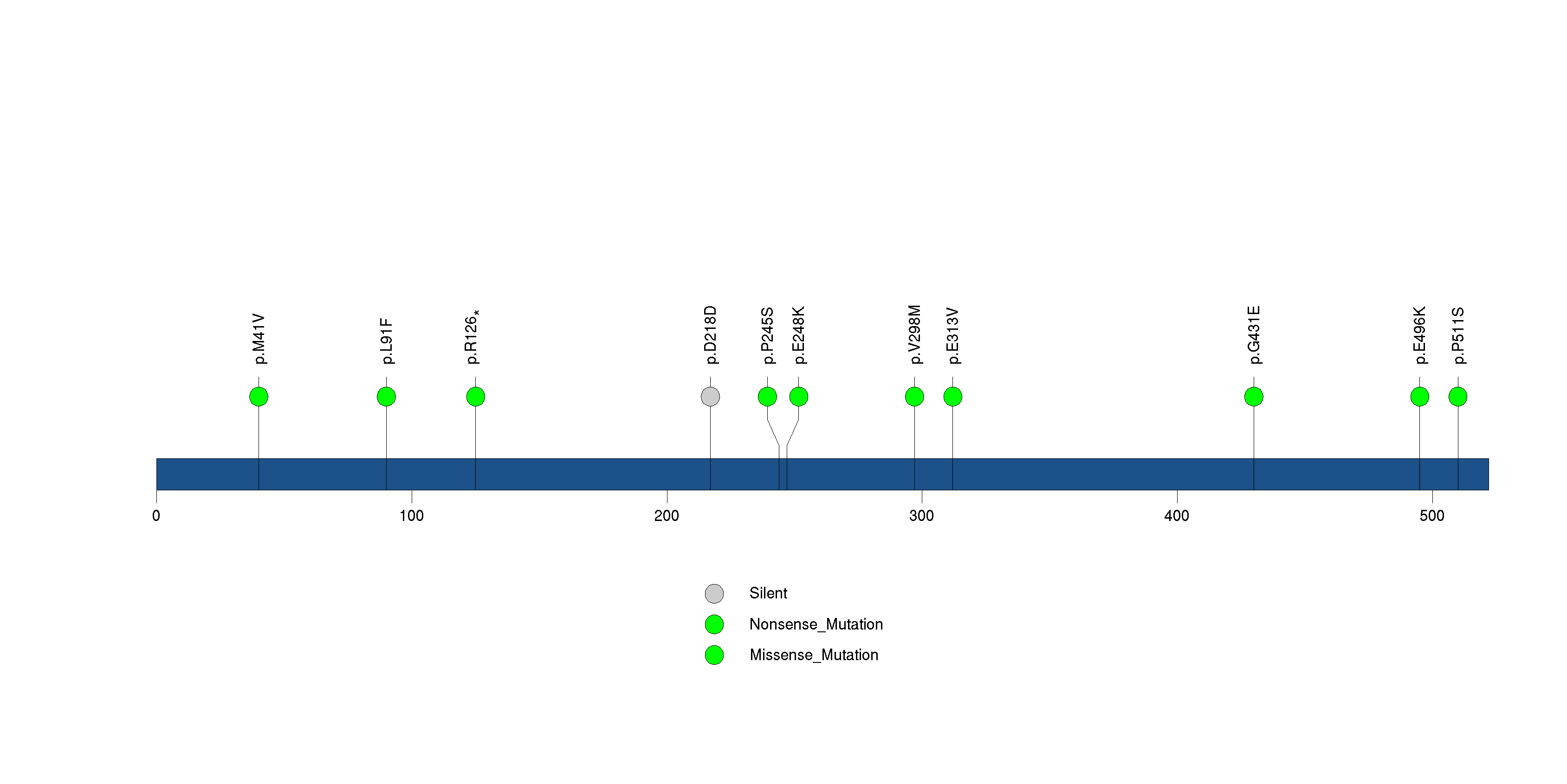
Figure S32. This figure depicts the distribution of mutations and mutation types across the C4orf22 significant gene.
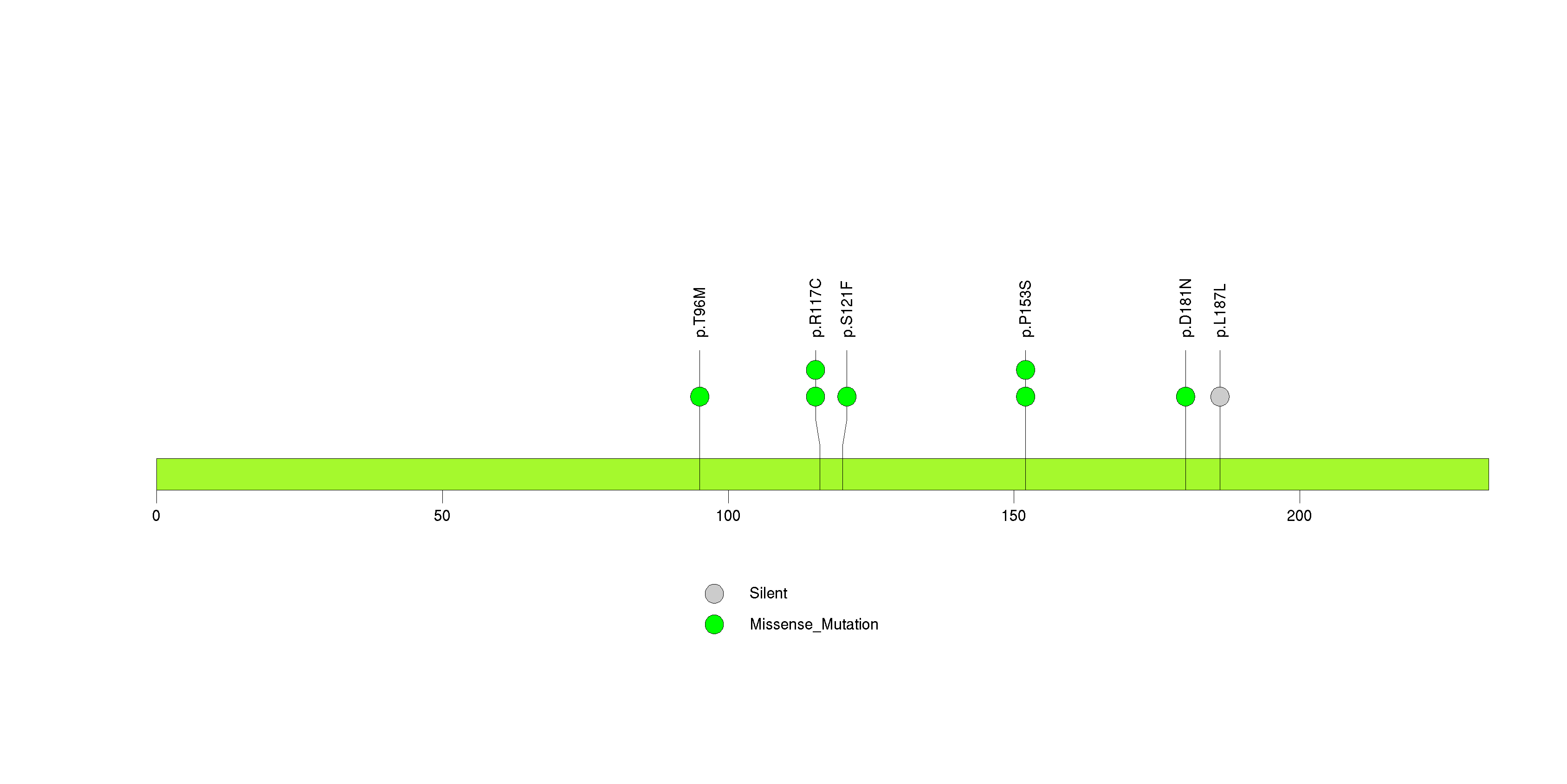
In this analysis, COSMIC is used as a filter to increase power by restricting the territory of each gene. Cosmic version: v48.
Table 4. Get Full Table Significantly mutated genes (COSMIC territory only). To access the database please go to: COSMIC. Number of significant genes found: 10. Number of genes displayed: 10
| rank | gene | description | n | cos | n_cos | N_cos | cos_ev | p | q |
|---|---|---|---|---|---|---|---|---|---|
| 1 | NRAS | neuroblastoma RAS viral (v-ras) oncogene homolog | 62 | 33 | 62 | 2046 | 77092 | 6.7e-16 | 3e-12 |
| 2 | TP53 | tumor protein p53 | 13 | 356 | 13 | 22072 | 1809 | 6.4e-15 | 1.5e-11 |
| 3 | CDKN2A | cyclin-dependent kinase inhibitor 2A (melanoma, p16, inhibits CDK4) | 12 | 332 | 12 | 20584 | 513 | 1.1e-14 | 1.6e-11 |
| 4 | IDH1 | isocitrate dehydrogenase 1 (NADP+), soluble | 5 | 5 | 4 | 310 | 5968 | 3.1e-11 | 3.5e-08 |
| 5 | EPHA7 | EPH receptor A7 | 14 | 13 | 3 | 806 | 3 | 4.2e-07 | 0.00038 |
| 6 | OR6C74 | olfactory receptor, family 6, subfamily C, member 74 | 2 | 1 | 2 | 62 | 2 | 5.5e-07 | 0.00041 |
| 7 | STK19 | serine/threonine kinase 19 | 4 | 2 | 2 | 124 | 4 | 2.2e-06 | 0.0014 |
| 8 | IFITM3 | interferon induced transmembrane protein 3 (1-8U) | 3 | 3 | 2 | 186 | 2 | 5e-06 | 0.0028 |
| 9 | FGFR2 | fibroblast growth factor receptor 2 (bacteria-expressed kinase, keratinocyte growth factor receptor, craniofacial dysostosis 1, Crouzon syndrome, Pfeiffer syndrome, Jackson-Weiss syndrome) | 10 | 51 | 3 | 3162 | 3 | 0.000025 | 0.012 |
| 10 | EPHA6 | EPH receptor A6 | 15 | 8 | 2 | 496 | 2 | 0.000035 | 0.016 |
Note:
n - number of (nonsilent) mutations in this gene across the individual set.
cos = number of unique mutated sites in this gene in COSMIC
n_cos = overlap between n and cos.
N_cos = number of individuals times cos.
cos_ev = total evidence: number of reports in COSMIC for mutations seen in this gene.
p = p-value for seeing the observed amount of overlap in this gene)
q = q-value, False Discovery Rate (Benjamini-Hochberg procedure)
Table 5. Get Full Table Genes with Clustered Mutations
| num | gene | desc | n | mindist | nmuts0 | nmuts3 | nmuts12 | npairs0 | npairs3 | npairs12 |
|---|---|---|---|---|---|---|---|---|---|---|
| 6208 | NRAS | neuroblastoma RAS viral (v-ras) oncogene homolog | 62 | 0 | 1491 | 1495 | 1495 | 1491 | 1495 | 1495 |
| 2648 | DNAH5 | dynein, axonemal, heavy chain 5 | 85 | 0 | 13 | 18 | 35 | 13 | 18 | 35 |
| 9319 | THSD7B | thrombospondin, type I, domain containing 7B | 38 | 0 | 10 | 11 | 15 | 10 | 11 | 15 |
| 9762 | TTN | titin | 251 | 0 | 9 | 13 | 20 | 9 | 13 | 20 |
| 9585 | TPTE | transmembrane phosphatase with tensin homology | 21 | 0 | 8 | 10 | 13 | 8 | 10 | 13 |
| 5790 | MUC16 | mucin 16, cell surface associated | 182 | 0 | 7 | 10 | 27 | 7 | 10 | 27 |
| 7472 | PSG4 | pregnancy specific beta-1-glycoprotein 4 | 15 | 0 | 7 | 9 | 12 | 7 | 9 | 12 |
| 4293 | IDH1 | isocitrate dehydrogenase 1 (NADP+), soluble | 5 | 0 | 6 | 6 | 6 | 6 | 6 | 6 |
| 6115 | NLRP5 | NLR family, pyrin domain containing 5 | 17 | 0 | 4 | 6 | 7 | 4 | 6 | 7 |
| 6858 | PCLO | piccolo (presynaptic cytomatrix protein) | 64 | 0 | 3 | 7 | 26 | 3 | 7 | 26 |
Note:
n - number of mutations in this gene in the individual set.
mindist - distance (in aa) between closest pair of mutations in this gene
npairs3 - how many pairs of mutations are within 3 aa of each other.
npairs12 - how many pairs of mutations are within 12 aa of each other.
Table 6. Get Full Table A Ranked List of Significantly Mutated Genesets. (Source: MSigDB GSEA Cannonical Pathway Set).Number of significant genesets found: 2. Number of genesets displayed: 10
| rank | geneset | description | genes | N_genes | mut_tally | N | n | npat | nsite | nsil | n1 | n2 | n3 | n4 | n5 | n6 | p_ns_s | p | q |
|---|---|---|---|---|---|---|---|---|---|---|---|---|---|---|---|---|---|---|---|
| 1 | SA_G1_AND_S_PHASES | Cdk2, 4, and 6 bind cyclin D in G1, while cdk2/cyclin E promotes the G1/S transition. | ARF1, ARF3, CCND1, CDK2, CDK4, CDKN1A, CDKN1B, CDKN2A, CFL1, E2F1, E2F2, MDM2, NXT1, PRB1, TP53 | 15 | CDK4(1), CDKN1A(3), CDKN2A(12), E2F1(1), E2F2(2), MDM2(1), NXT1(1), PRB1(4), TP53(13) | 769500 | 38 | 25 | 33 | 2 | 16 | 2 | 2 | 2 | 16 | 0 | 0.000016 | 1.1e-07 | 0.000068 |
| 2 | ARFPATHWAY | Cyclin-dependent kinase inhibitor 2A is a tumor suppressor that induces G1 arrest and can activate the p53 pathway, leading to G2/M arrest. | ABL1, CDKN2A, E2F1, MDM2, MYC, PIK3CA, PIK3R1, POLR1A, POLR1B, POLR1C, POLR1D, RAC1, RB1, TBX2, TP53, TWIST1 | 16 | ABL1(3), CDKN2A(12), E2F1(1), MDM2(1), MYC(2), PIK3CA(1), POLR1A(3), POLR1B(1), RAC1(3), RB1(3), TBX2(3), TP53(13) | 1849356 | 46 | 30 | 41 | 3 | 20 | 3 | 2 | 4 | 17 | 0 | 0.000016 | 0.00011 | 0.034 |
| 3 | SA_REG_CASCADE_OF_CYCLIN_EXPR | Expression of cyclins regulates progression through the cell cycle by activating cyclin-dependent kinases. | CCNA1, CCNA2, CCND1, CCNE1, CCNE2, CDK2, CDK4, CDKN1B, CDKN2A, E2F1, E2F2, E2F4, PRB1 | 13 | CCNA1(3), CCNE2(3), CDK4(1), CDKN2A(12), E2F1(1), E2F2(2), PRB1(4) | 822258 | 26 | 20 | 22 | 2 | 14 | 0 | 1 | 2 | 9 | 0 | 0.00096 | 0.0014 | 0.28 |
| 4 | FOSBPATHWAY | FOSB gene expression and drug abuse | CDK5, FOSB, GRIA2, JUND, PPP1R1B | 5 | CDK5(2), GRIA2(11), PPP1R1B(1) | 332784 | 14 | 13 | 14 | 3 | 6 | 1 | 0 | 4 | 3 | 0 | 0.19 | 0.003 | 0.37 |
| 5 | P53PATHWAY | p53 induces cell cycle arrest or apoptosis under conditions of DNA damage. | APAF1, ATM, BAX, BCL2, CCND1, CCNE1, CDK2, CDK4, CDKN1A, E2F1, GADD45A, MDM2, PCNA, RB1, TIMP3, TP53 | 16 | APAF1(2), ATM(4), BAX(2), BCL2(1), CDK4(1), CDKN1A(3), E2F1(1), MDM2(1), RB1(3), TIMP3(1), TP53(13) | 1642639 | 32 | 24 | 31 | 3 | 12 | 4 | 2 | 3 | 11 | 0 | 0.0032 | 0.003 | 0.37 |
| 6 | G1PATHWAY | CDK4/6-cyclin D and CDK2-cyclin E phosphorylate Rb, which allows the transcription of genes needed for the G1/S cell cycle transition. | ABL1, ATM, ATR, CCNA1, CCND1, CCNE1, CDC2, CDC25A, CDK2, CDK4, CDK6, CDKN1A, CDKN1B, CDKN2A, CDKN2B, DHFR, E2F1, GSK3B, HDAC1, MADH3, MADH4, RB1, SKP2, TFDP1, TGFB1, TGFB2, TGFB3, TP53 | 25 | ABL1(3), ATM(4), ATR(4), CCNA1(3), CDC25A(3), CDK4(1), CDKN1A(3), CDKN2A(12), E2F1(1), RB1(3), SKP2(1), TFDP1(1), TGFB1(1), TGFB3(1), TP53(13) | 2749707 | 54 | 33 | 49 | 7 | 24 | 3 | 3 | 3 | 21 | 0 | 0.00022 | 0.0036 | 0.37 |
| 7 | SLRPPATHWAY | Small leucine-rich proteoglycans (SLRPs) interact with and reorganize collagen fibers in the extracellular matrix. | BGN, DCN, DSPG3, FMOD, KERA, LUM | 5 | BGN(1), DCN(4), FMOD(2), KERA(4), LUM(2) | 319453 | 13 | 12 | 13 | 1 | 11 | 0 | 2 | 0 | 0 | 0 | 0.008 | 0.0091 | 0.8 |
| 8 | TIDPATHWAY | On ligand binding, interferon gamma receptors stimulate JAK2 kinase to phosphorylate STAT transcription factors, which promote expression of interferon responsive genes. | DNAJA3, HSPA1A, IFNG, IFNGR1, IFNGR2, IKBKB, JAK2, LIN7A, NFKB1, NFKBIA, RB1, RELA, TIP-1, TNF, TNFRSF1A, TNFRSF1B, TP53, USH1C, WT1 | 18 | DNAJA3(2), IFNGR1(3), IFNGR2(1), JAK2(1), LIN7A(3), NFKB1(3), RB1(3), RELA(2), TNFRSF1A(1), TNFRSF1B(2), TP53(13), USH1C(3) | 1644576 | 37 | 29 | 36 | 6 | 15 | 3 | 2 | 6 | 11 | 0 | 0.018 | 0.017 | 1 |
| 9 | 1_AND_2_METHYLNAPHTHALENE_DEGRADATION | ADH1A, ADH1A, ADH1B, ADH1C, ADH1B, ADH1C, ADH4, ADH6, ADH7, ADHFE1 | 7 | ADH1A(2), ADH1B(6), ADH1C(8), ADH4(2), ADH7(5), ADHFE1(3) | 515247 | 26 | 22 | 24 | 6 | 19 | 1 | 2 | 3 | 1 | 0 | 0.037 | 0.021 | 1 | |
| 10 | TERTPATHWAY | hTERC, the RNA subunit of telomerase, and hTERT, the catalytic protein subunit, are required for telomerase activity and are overexpressed in many cancers. | HDAC1, MAX, MYC, SP1, SP3, TP53, WT1, ZNF42 | 7 | MYC(2), TP53(13) | 647120 | 15 | 14 | 14 | 0 | 8 | 0 | 1 | 1 | 5 | 0 | 0.0055 | 0.026 | 1 |
Table 7. Get Full Table A Ranked List of Significantly Mutated Genesets (Excluding Significantly Mutated Genes). Number of significant genesets found: 0. Number of genesets displayed: 10
| rank | geneset | description | genes | N_genes | mut_tally | N | n | npat | nsite | nsil | n1 | n2 | n3 | n4 | n5 | n6 | p_ns_s | p | q |
|---|---|---|---|---|---|---|---|---|---|---|---|---|---|---|---|---|---|---|---|
| 1 | FOSBPATHWAY | FOSB gene expression and drug abuse | CDK5, FOSB, GRIA2, JUND, PPP1R1B | 5 | CDK5(2), GRIA2(11), PPP1R1B(1) | 332784 | 14 | 13 | 14 | 3 | 6 | 1 | 0 | 4 | 3 | 0 | 0.19 | 0.003 | 1 |
| 2 | SLRPPATHWAY | Small leucine-rich proteoglycans (SLRPs) interact with and reorganize collagen fibers in the extracellular matrix. | BGN, DCN, DSPG3, FMOD, KERA, LUM | 5 | BGN(1), DCN(4), FMOD(2), KERA(4), LUM(2) | 319453 | 13 | 12 | 13 | 1 | 11 | 0 | 2 | 0 | 0 | 0 | 0.008 | 0.0091 | 1 |
| 3 | 1_AND_2_METHYLNAPHTHALENE_DEGRADATION | ADH1A, ADH1A, ADH1B, ADH1C, ADH1B, ADH1C, ADH4, ADH6, ADH7, ADHFE1 | 6 | ADH1A(2), ADH1C(8), ADH4(2), ADH7(5), ADHFE1(3) | 443633 | 20 | 17 | 18 | 5 | 14 | 1 | 1 | 3 | 1 | 0 | 0.1 | 0.088 | 1 | |
| 4 | SA_FAS_SIGNALING | The TNF-type receptor Fas induces apoptosis on ligand binding. | BCL2, CASP3, CASP8, CFL1, CFLAR, P11, PDE6D, TNFRSF6, TNFSF6 | 6 | BCL2(1), CASP3(1), CASP8(2), CFLAR(3), PDE6D(1) | 357732 | 8 | 8 | 8 | 1 | 3 | 1 | 1 | 2 | 1 | 0 | 0.21 | 0.11 | 1 |
| 5 | HSA00401_NOVOBIOCIN_BIOSYNTHESIS | Genes involved in novobiocin biosynthesis | GOT1, GOT2, TAT | 3 | GOT2(3), TAT(5) | 240405 | 8 | 7 | 8 | 3 | 4 | 1 | 1 | 0 | 2 | 0 | 0.37 | 0.11 | 1 |
| 6 | HSA00627_1,4_DICHLOROBENZENE_DEGRADATION | Genes involved in 1,4-dichlorobenzene degradation | CMBL | 1 | CMBL(2) | 46983 | 2 | 2 | 2 | 0 | 2 | 0 | 0 | 0 | 0 | 0 | 0.46 | 0.14 | 1 |
| 7 | HSA00830_RETINOL_METABOLISM | Genes involved in retinol metabolism | ALDH1A1, ALDH1A2, BCMO1, RDH5 | 4 | ALDH1A1(2), ALDH1A2(2), BCMO1(5), RDH5(1) | 356527 | 10 | 10 | 9 | 3 | 8 | 0 | 0 | 2 | 0 | 0 | 0.21 | 0.29 | 1 |
| 8 | SA_G1_AND_S_PHASES | Cdk2, 4, and 6 bind cyclin D in G1, while cdk2/cyclin E promotes the G1/S transition. | ARF1, ARF3, CCND1, CDK2, CDK4, CDKN1A, CDKN1B, CDKN2A, CFL1, E2F1, E2F2, MDM2, NXT1, PRB1, TP53 | 13 | CDK4(1), CDKN1A(3), E2F1(1), E2F2(2), MDM2(1), NXT1(1), PRB1(4) | 639643 | 13 | 11 | 13 | 2 | 7 | 2 | 1 | 1 | 2 | 0 | 0.048 | 0.3 | 1 |
| 9 | HSA00472_D_ARGININE_AND_D_ORNITHINE_METABOLISM | Genes involved in D-arginine and D-ornithine metabolism | DAO | 1 | DAO(1) | 65308 | 1 | 1 | 1 | 0 | 0 | 0 | 0 | 1 | 0 | 0 | 0.83 | 0.31 | 1 |
| 10 | SA_G2_AND_M_PHASES | Cdc25 activates the cdc2/cyclin B complex to induce the G2/M transition. | CDC2, CDC25A, CDC25B, CDK7, CDKN1A, CHEK1, NEK1, WEE1 | 7 | CDC25A(3), CDC25B(3), CDKN1A(3), NEK1(1) | 636369 | 10 | 10 | 10 | 2 | 4 | 4 | 0 | 1 | 1 | 0 | 0.26 | 0.37 | 1 |
In brief, we tabulate the number of mutations and the number of covered bases for each gene. The counts are broken down by mutation context category: four context categories that are discovered by MutSig, and one for indel and 'null' mutations, which include indels, nonsense mutations, splice-site mutations, and non-stop (read-through) mutations. For each gene, we calculate the probability of seeing the observed constellation of mutations, i.e. the product P1 x P2 x ... x Pm, or a more extreme one, given the background mutation rates calculated across the dataset. [1]
This is an experimental feature. The full results of the analysis summarized in this report can be downloaded from the TCGA Data Coordination Center.